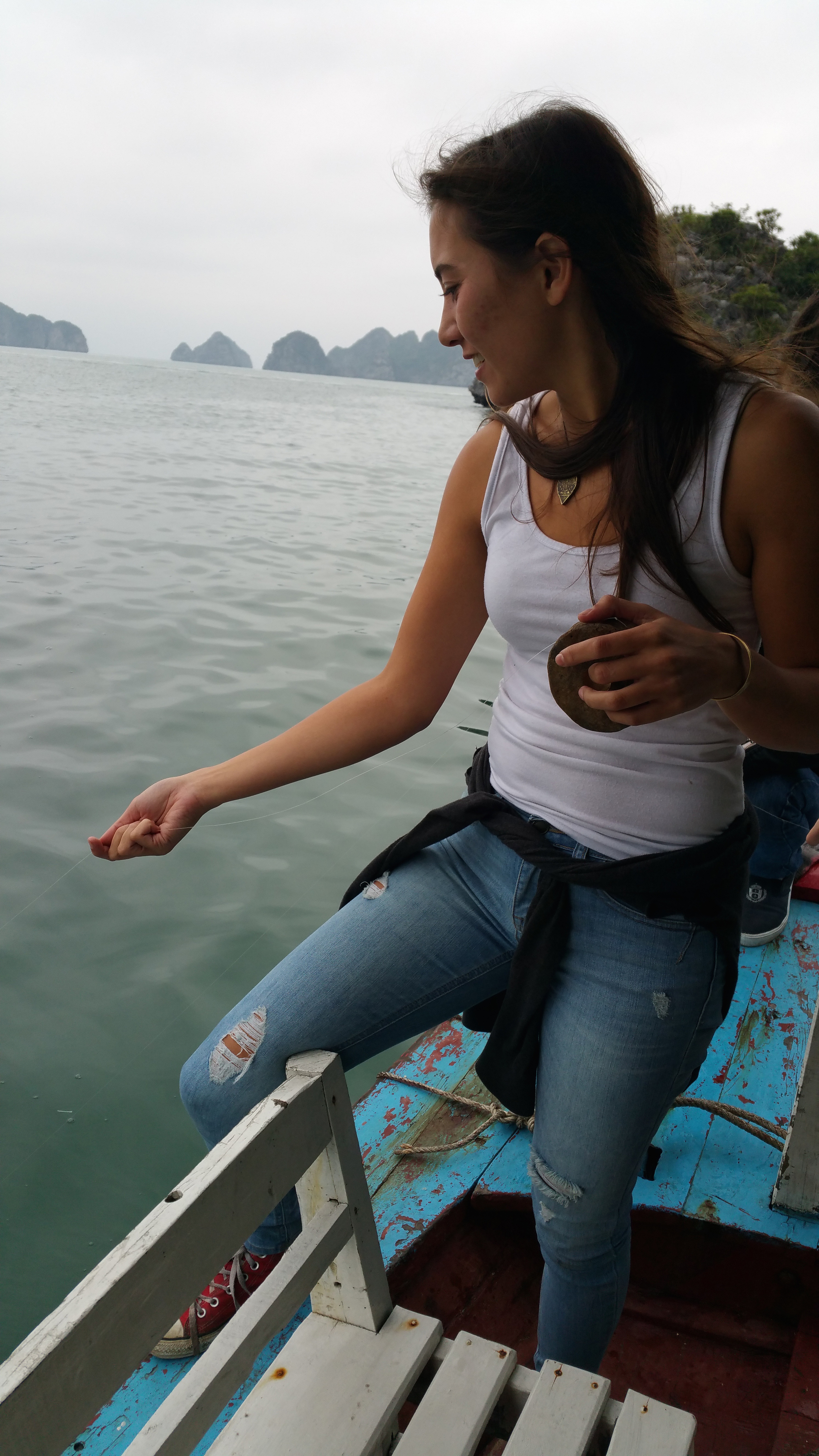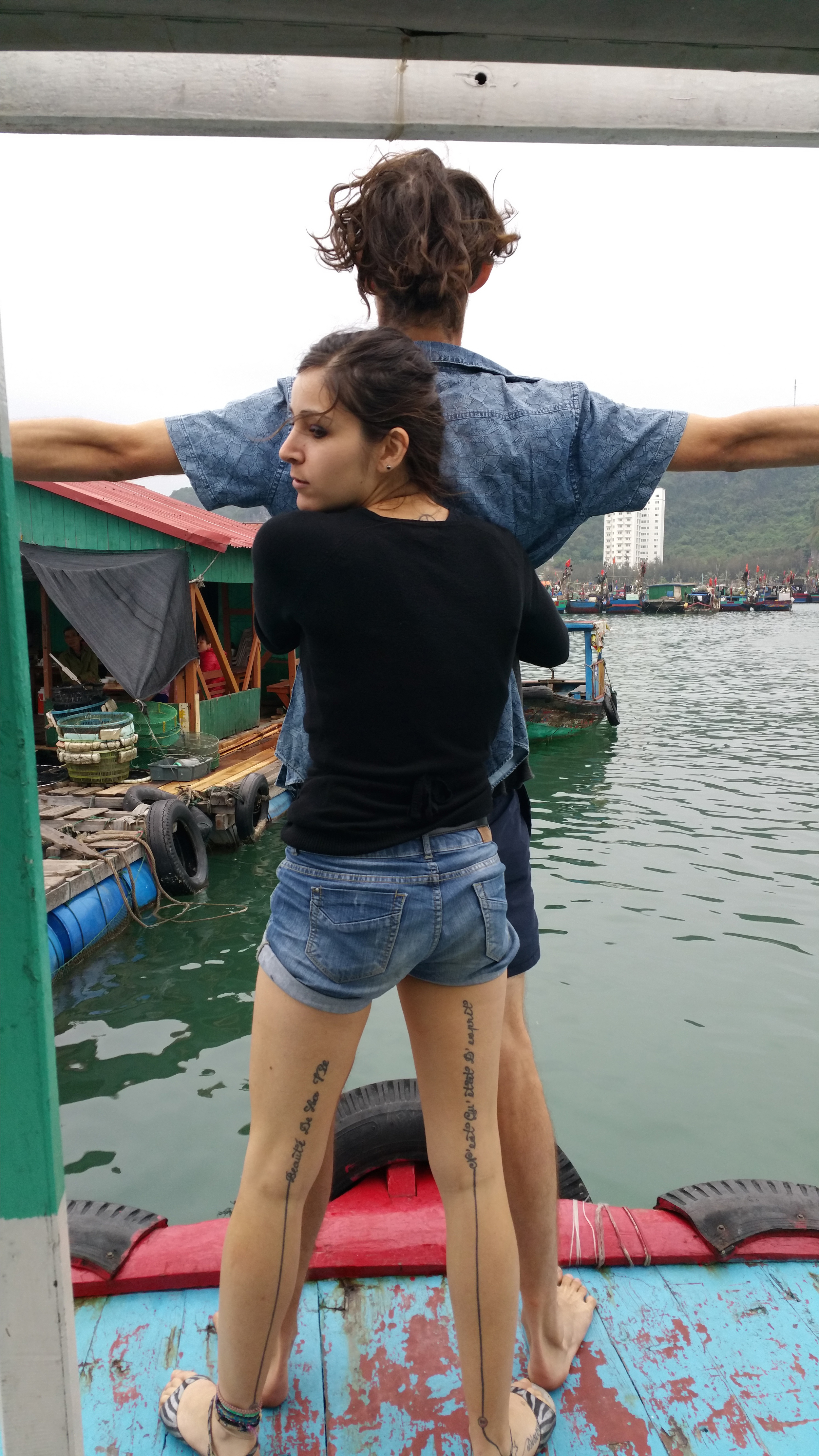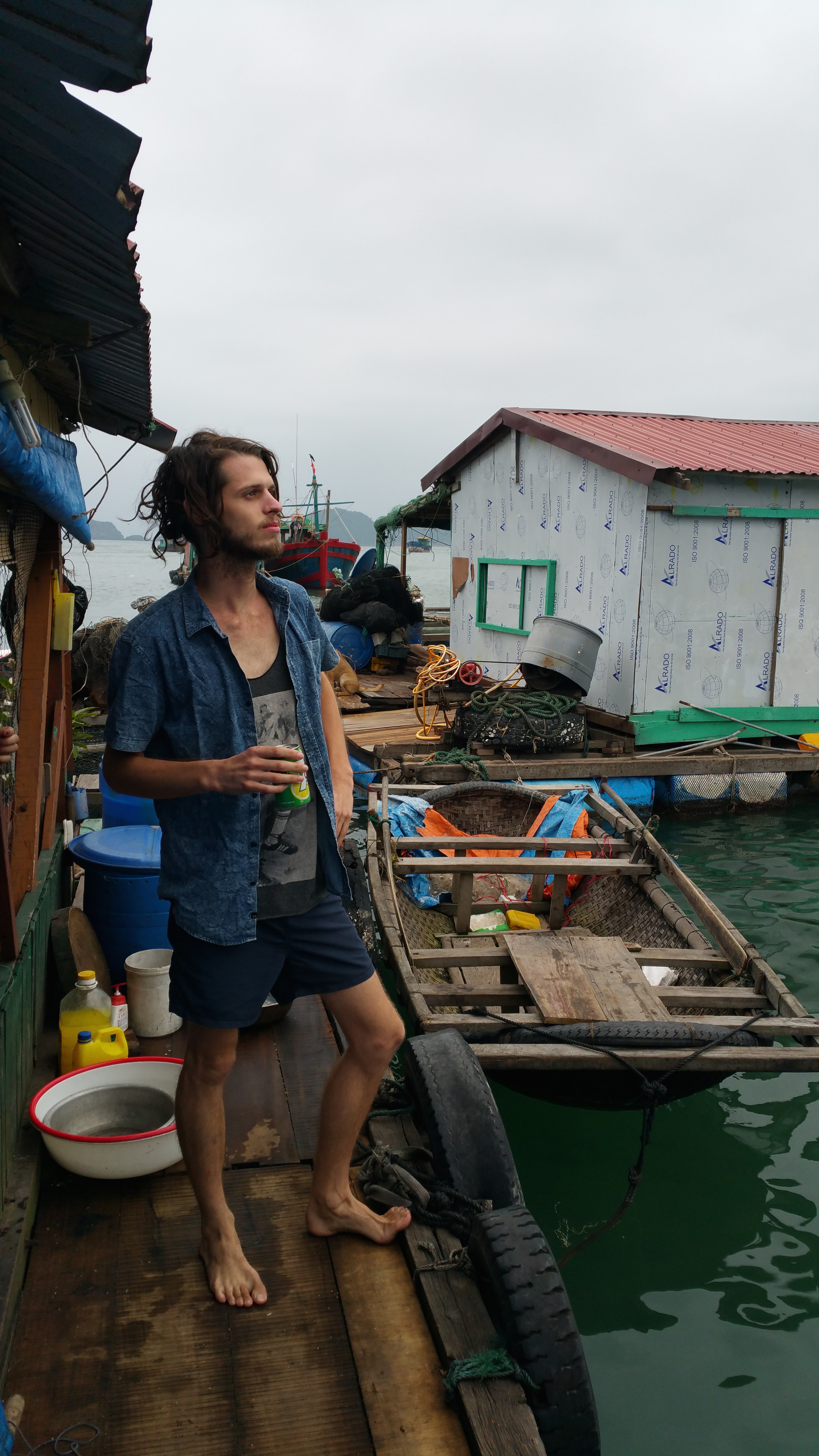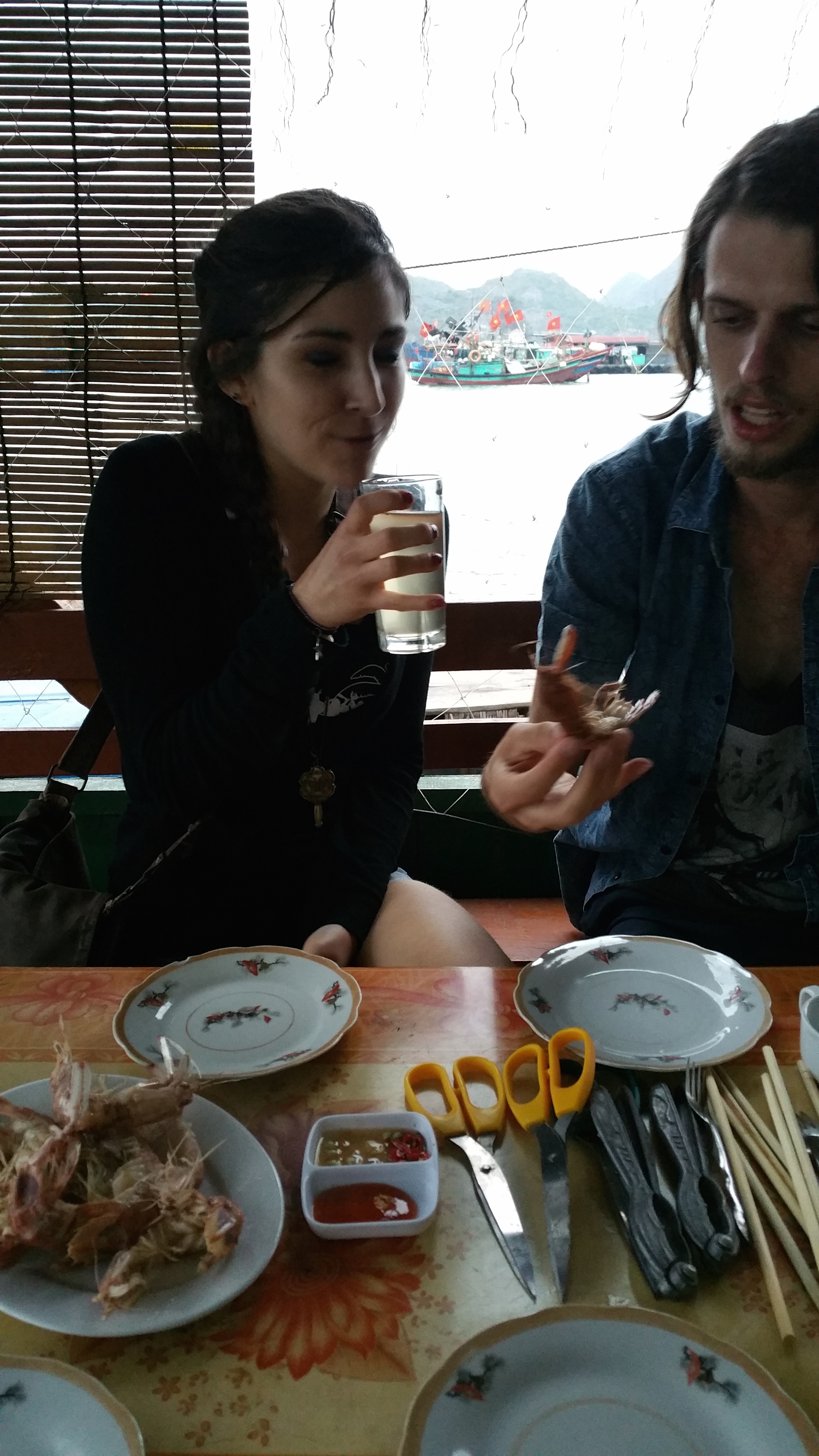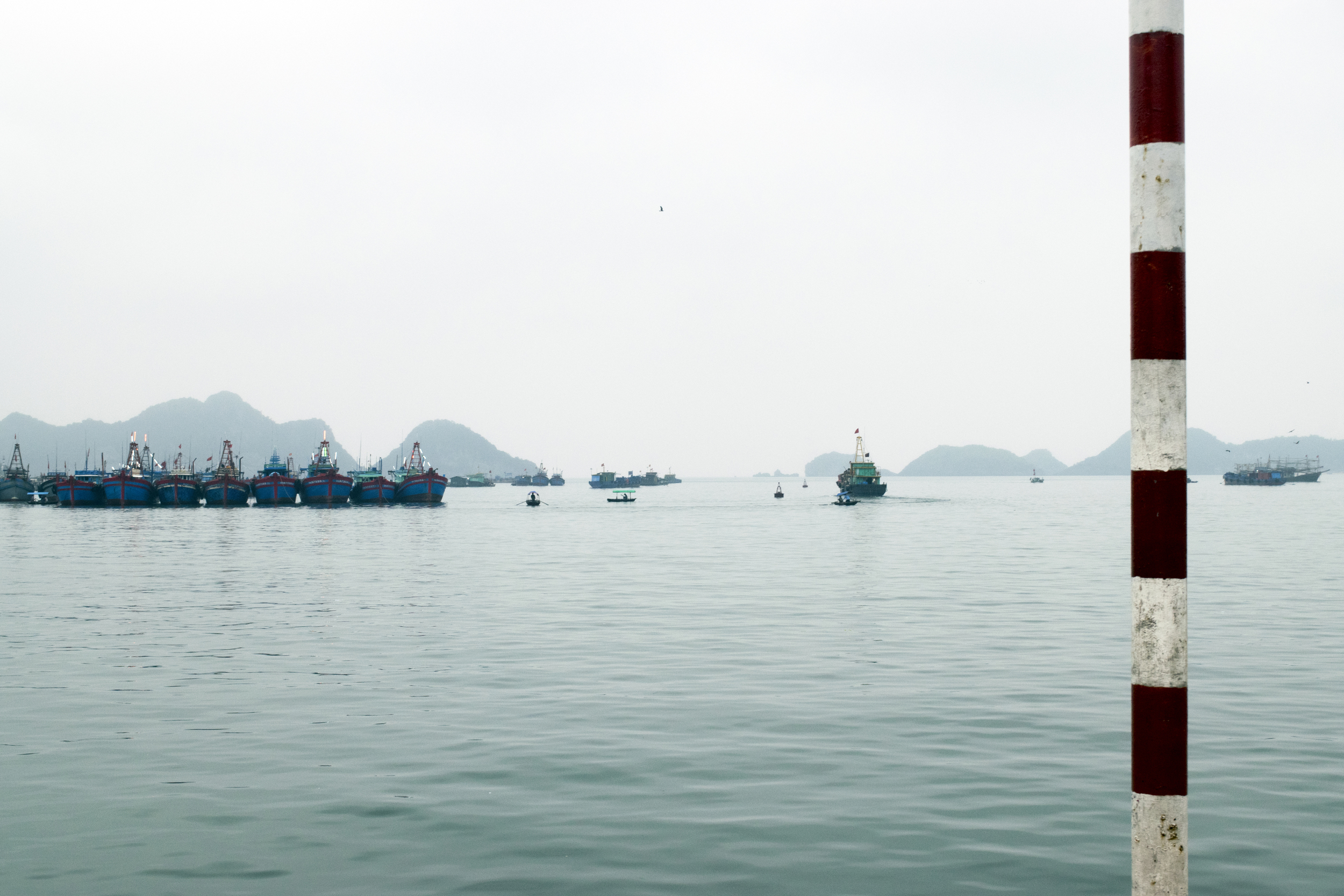
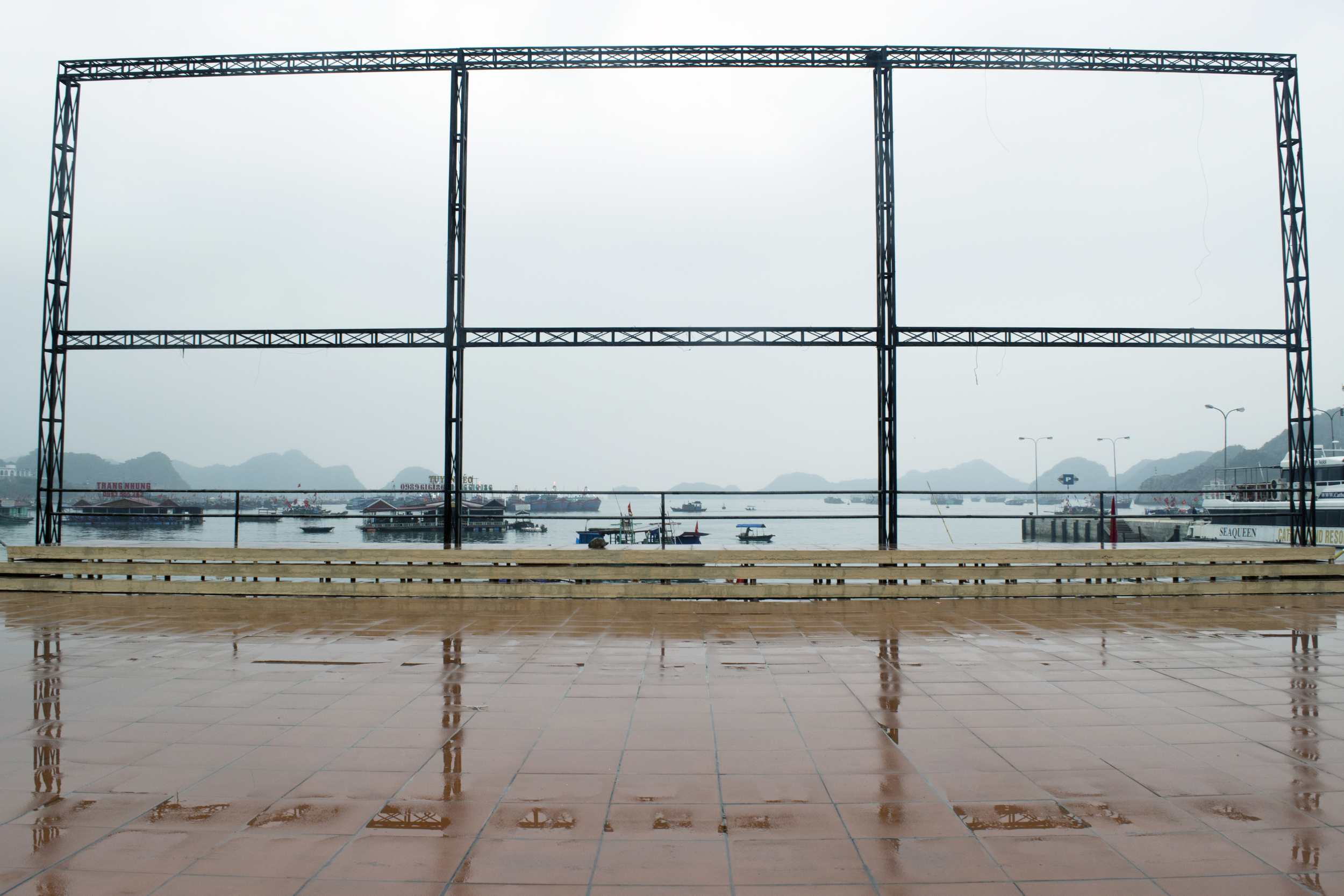
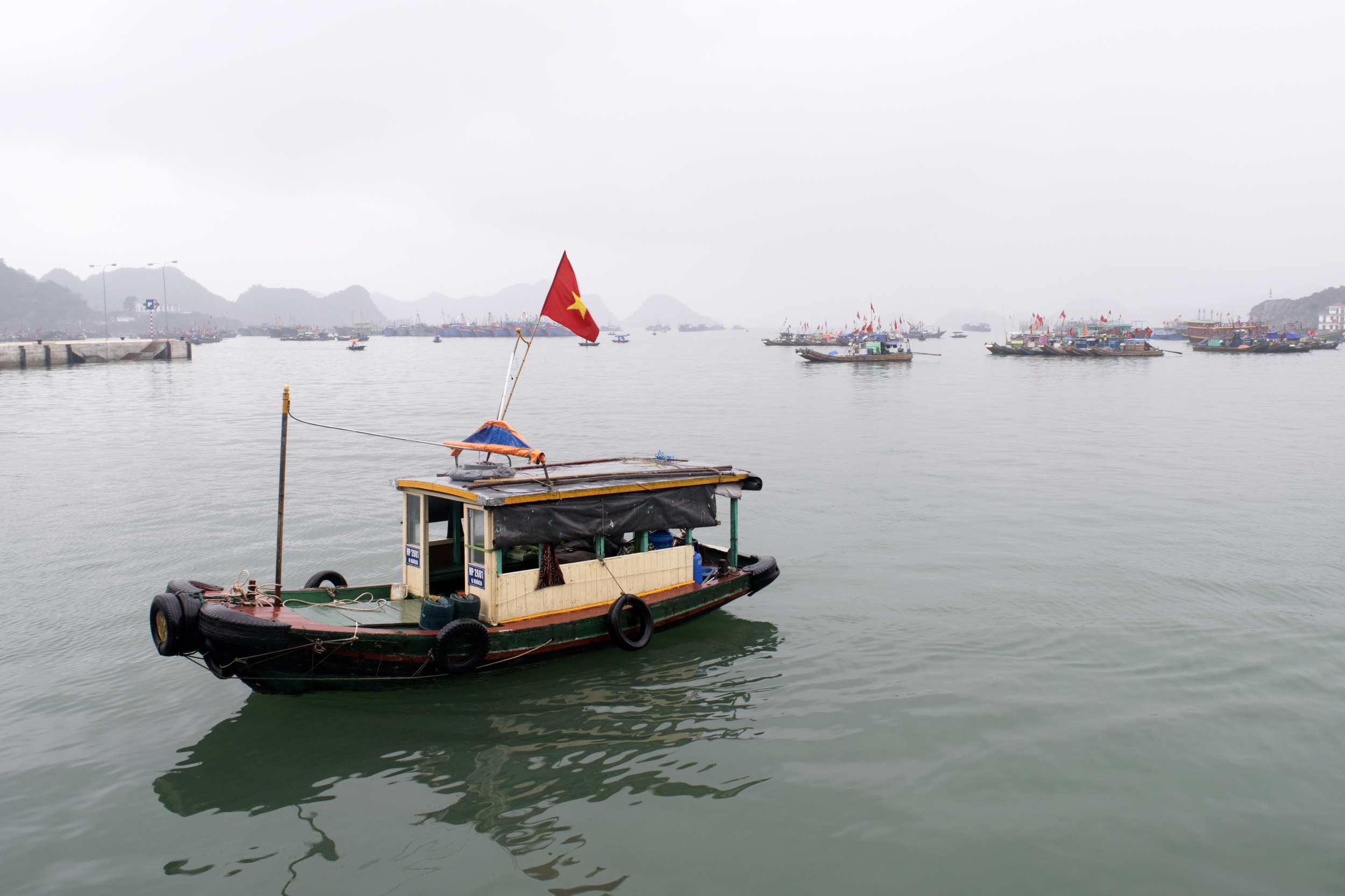
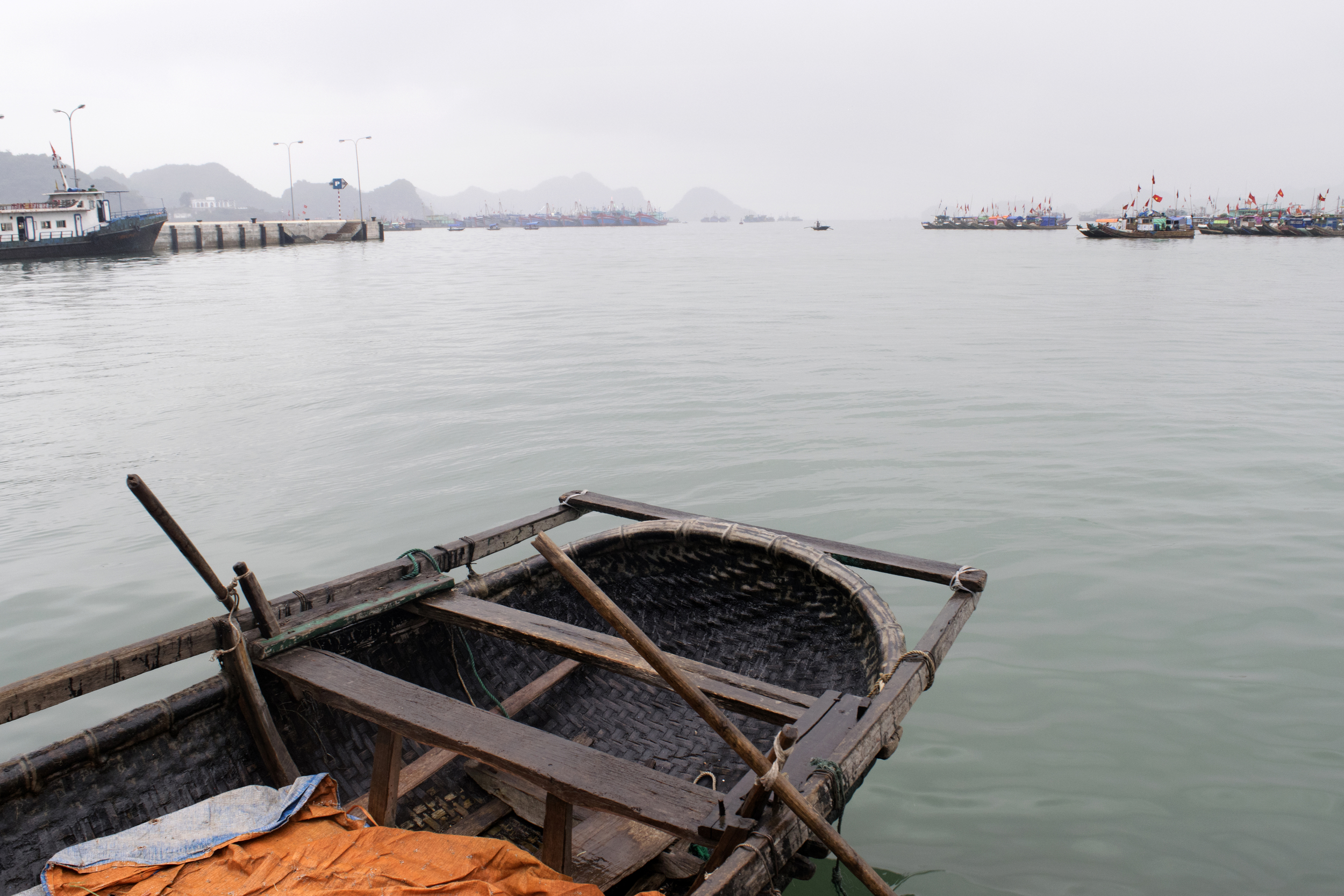
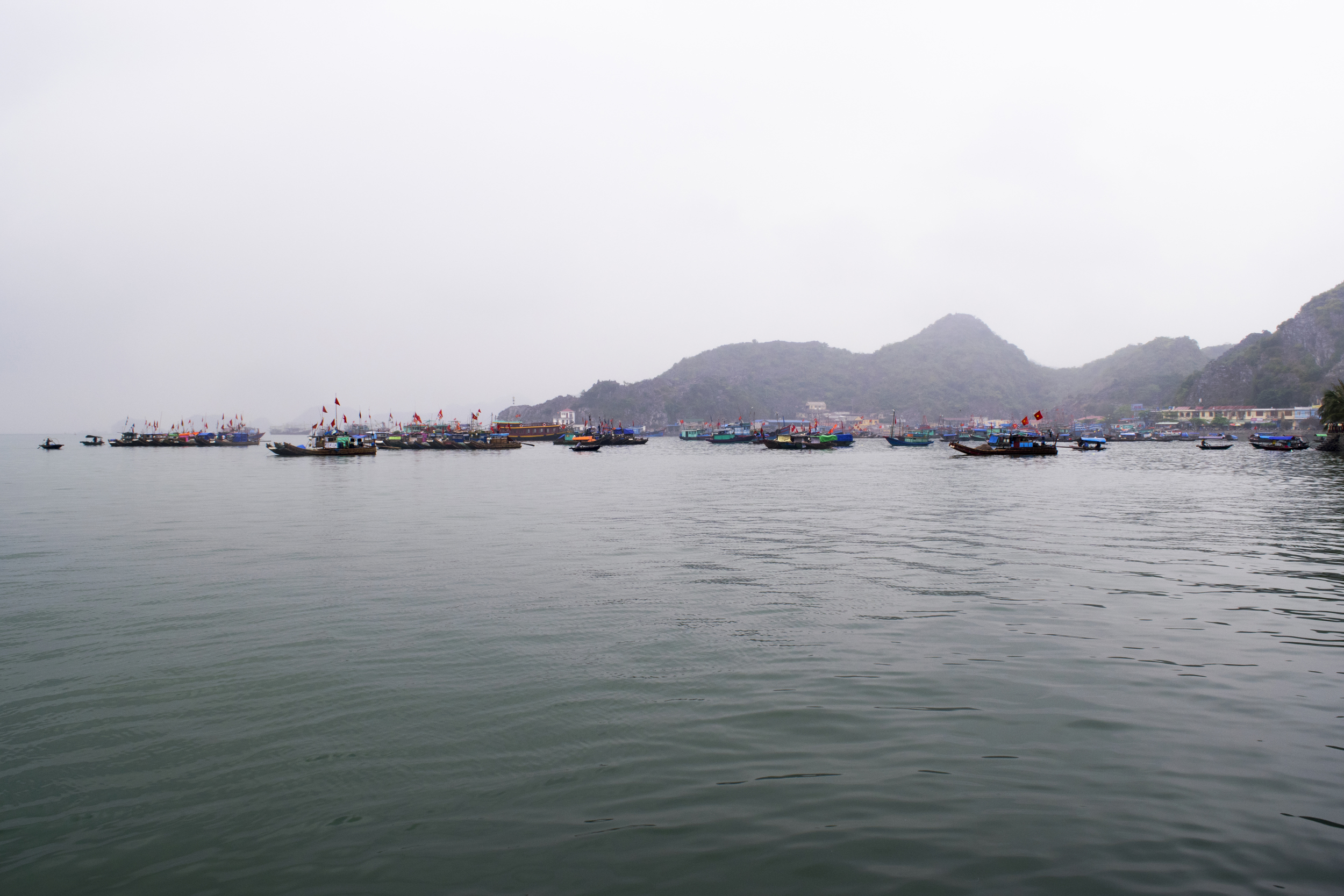
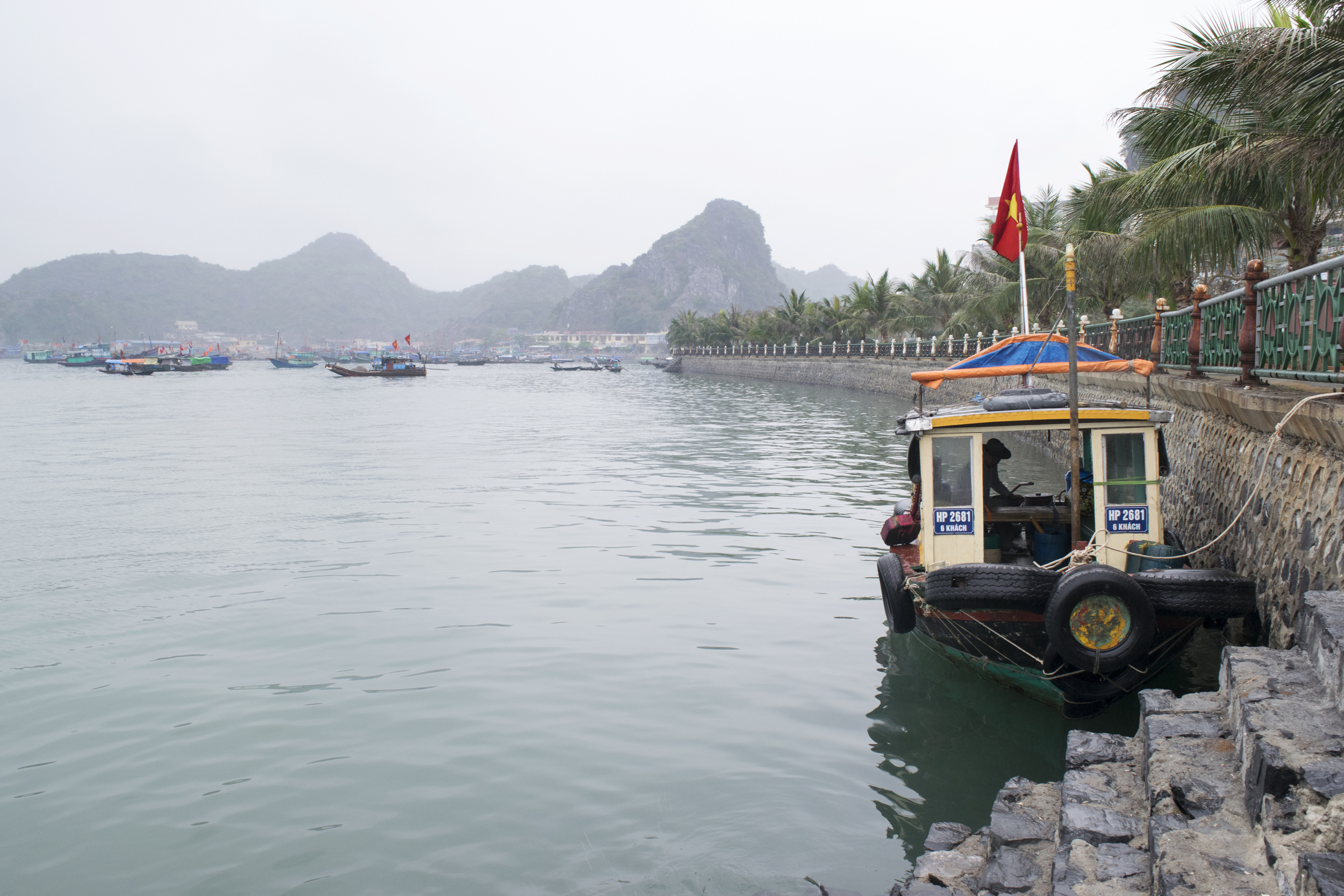
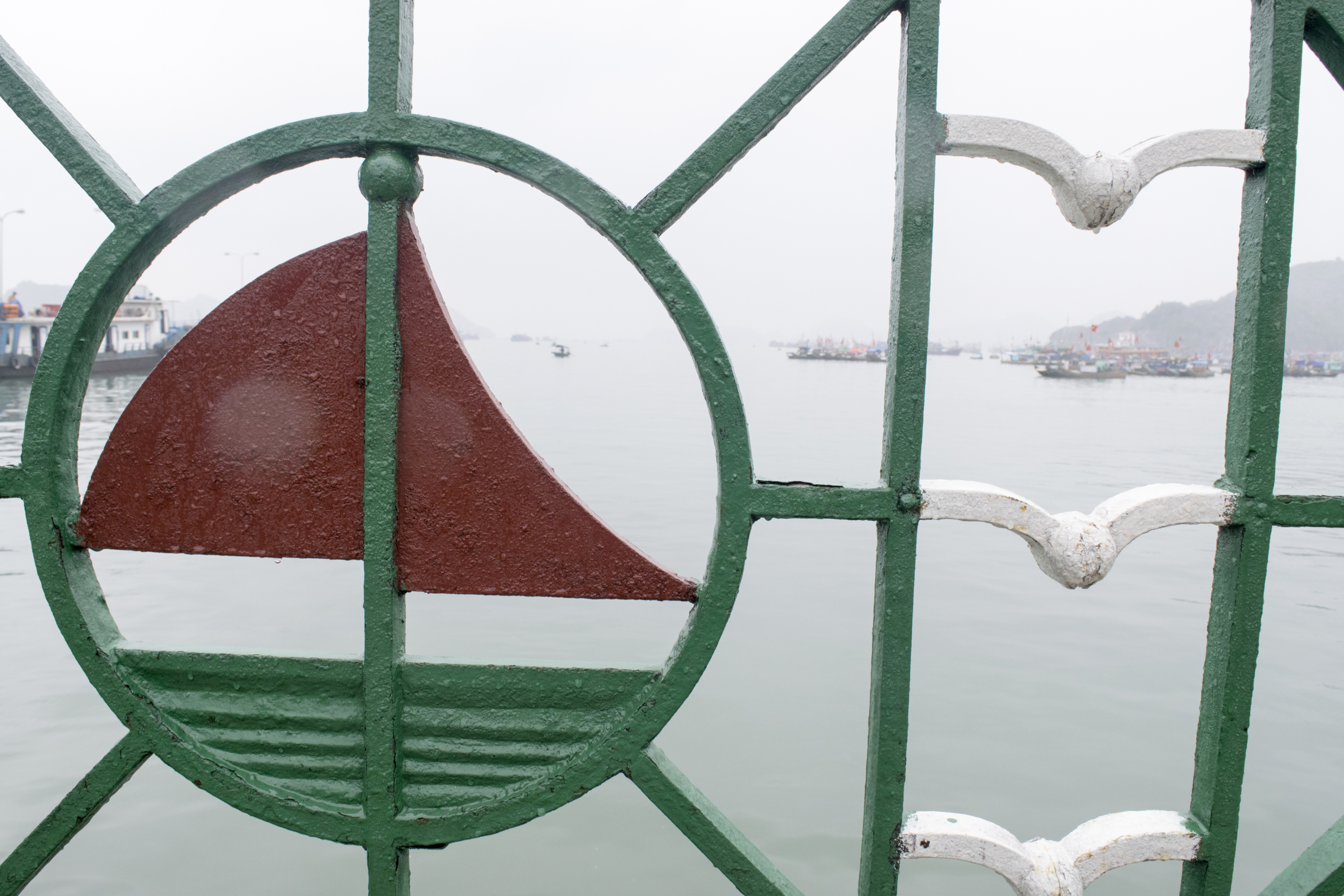
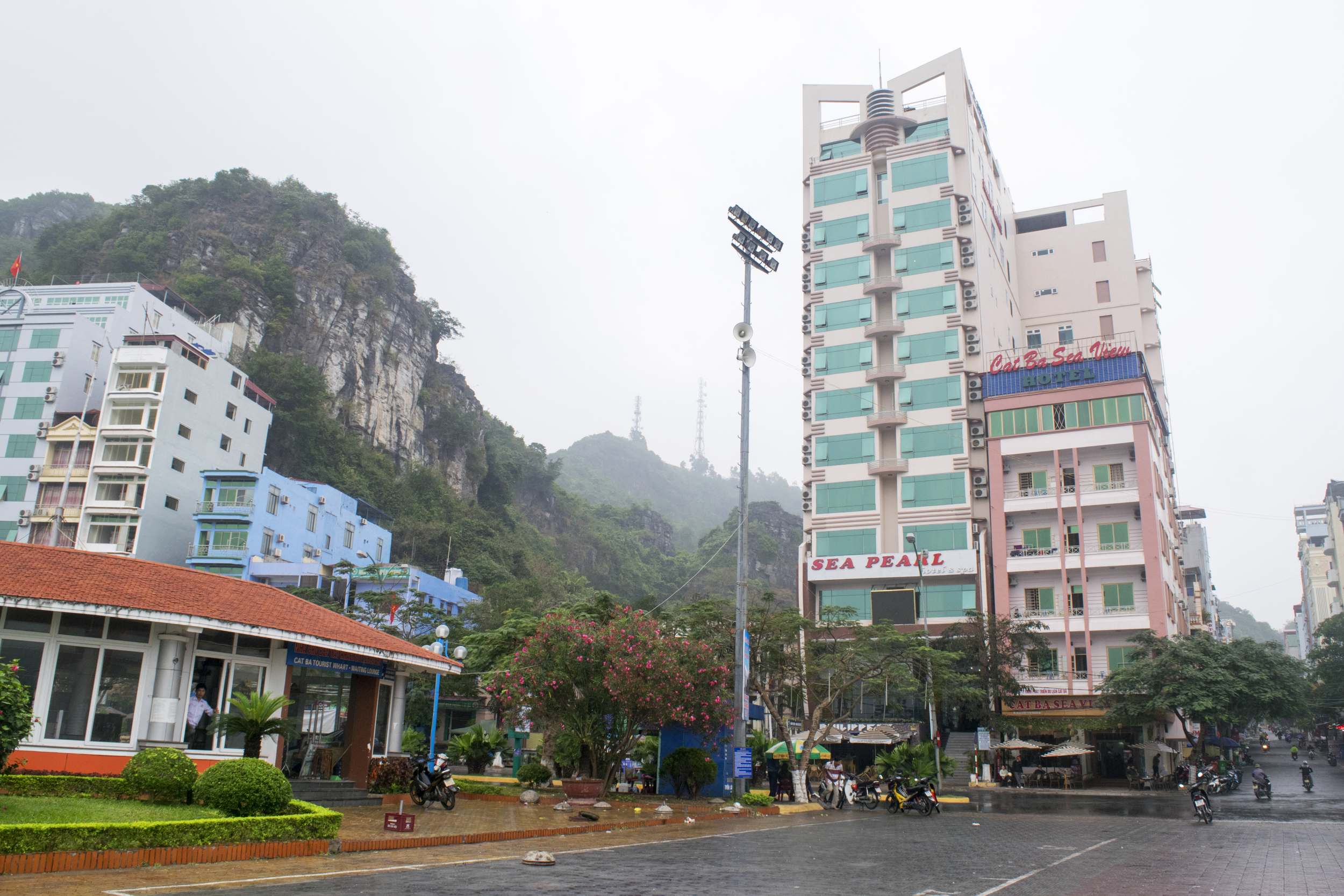
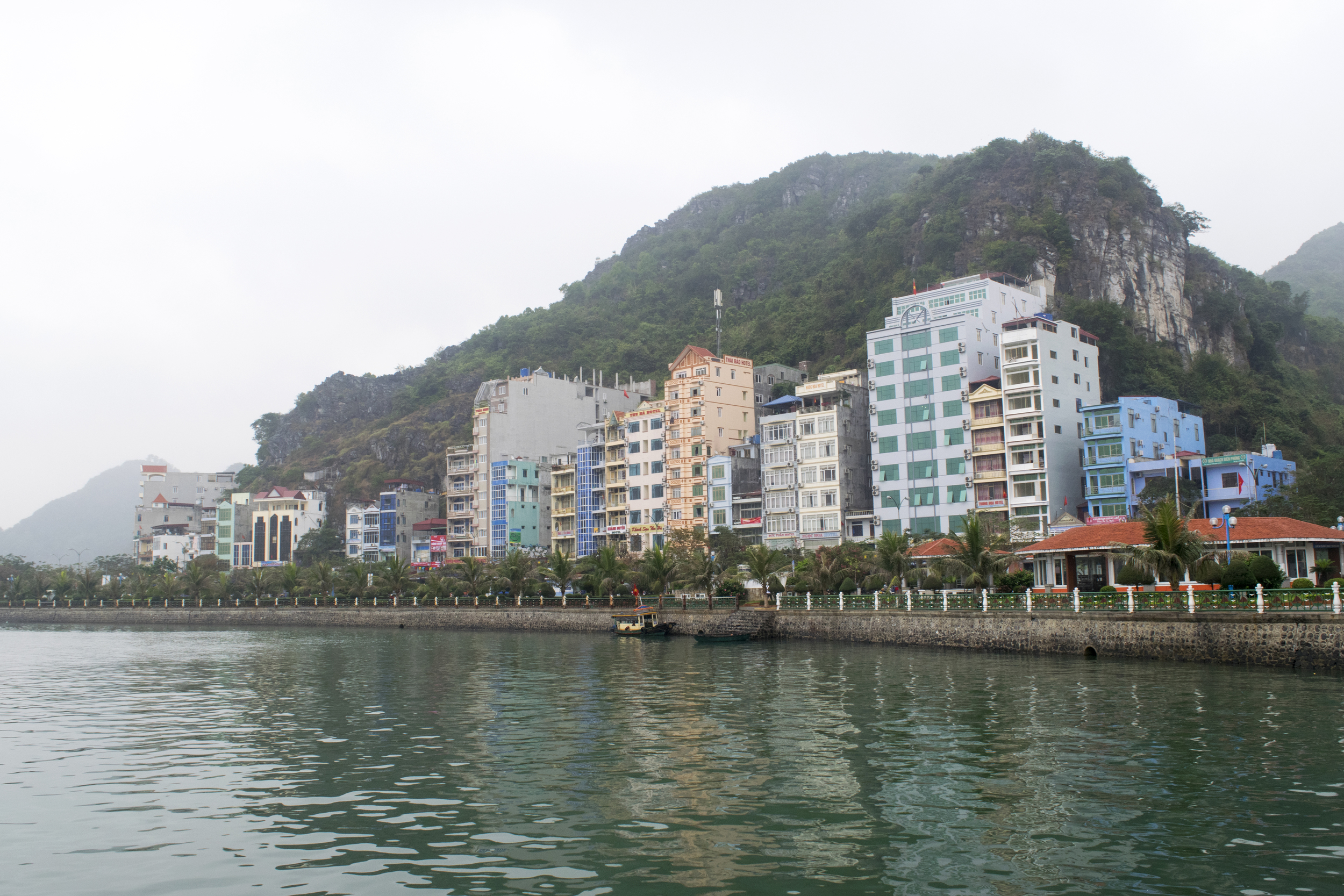

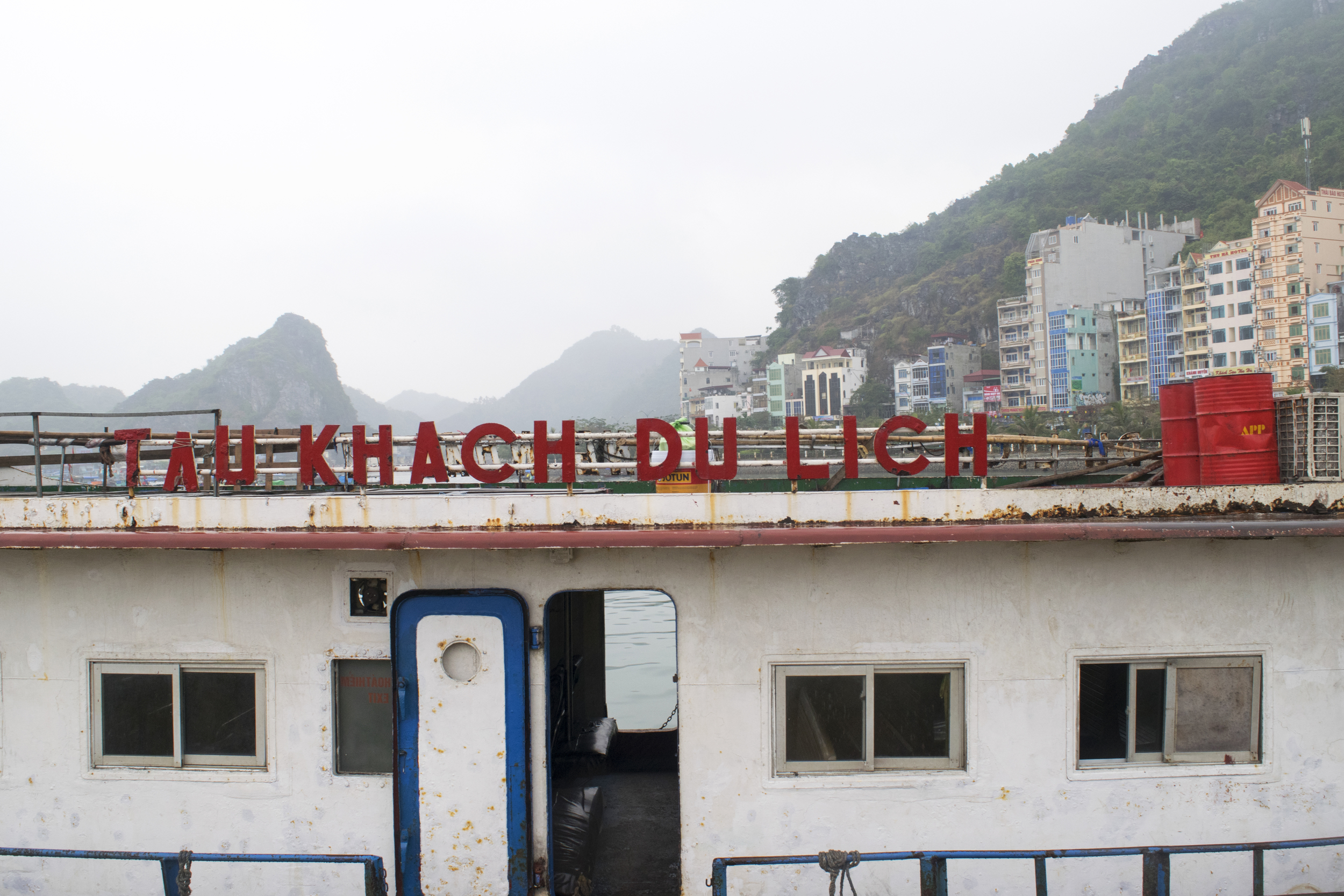
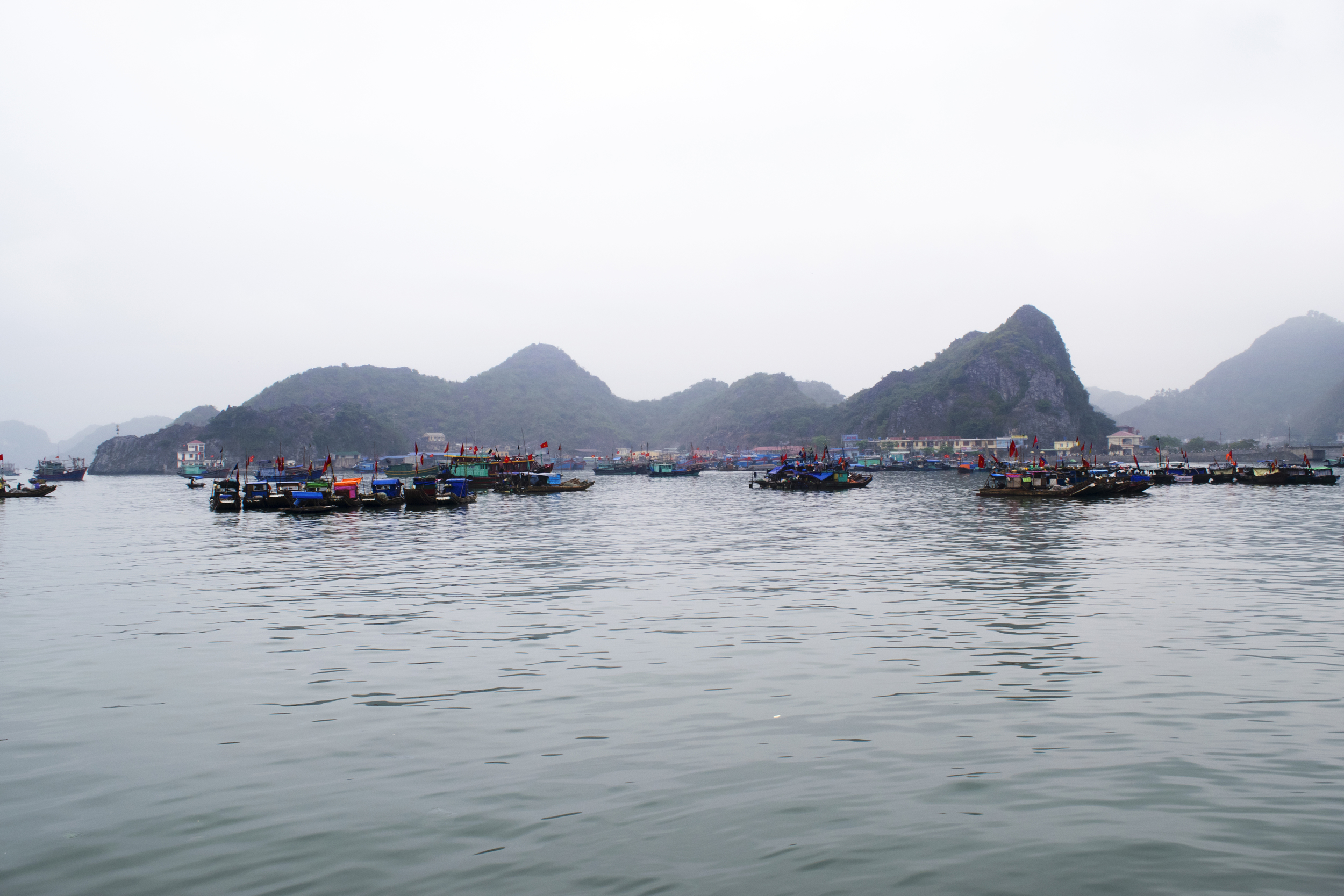
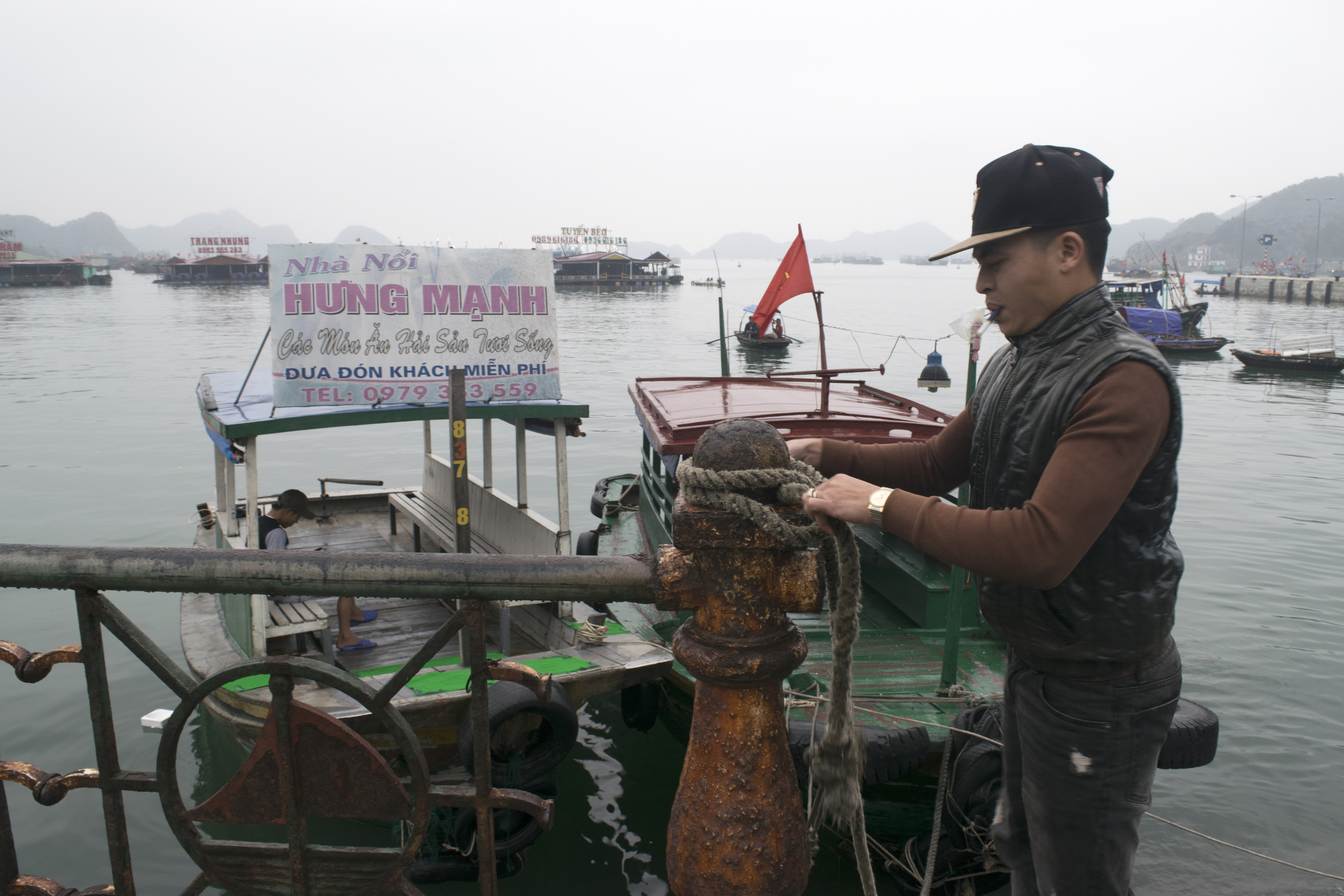
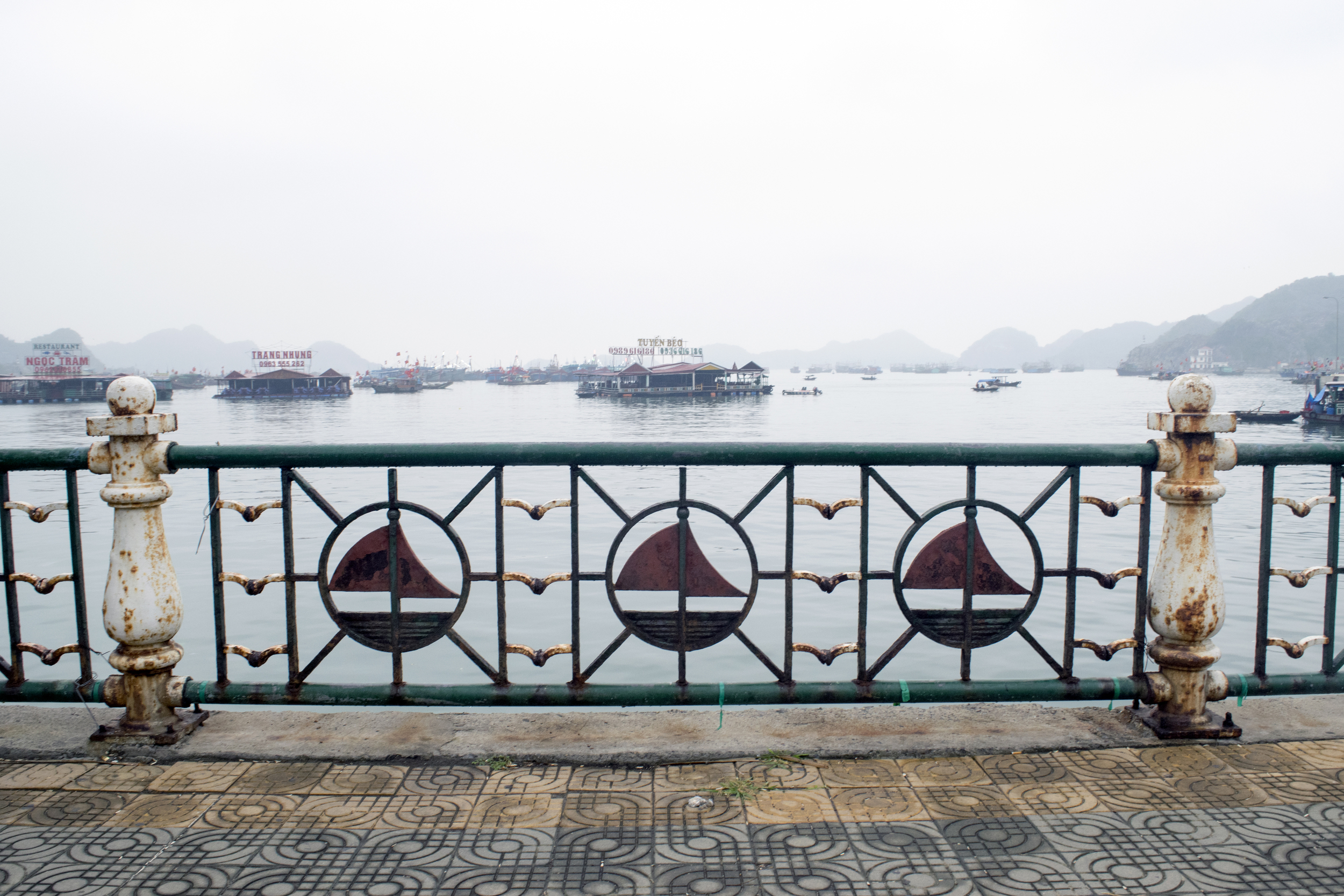
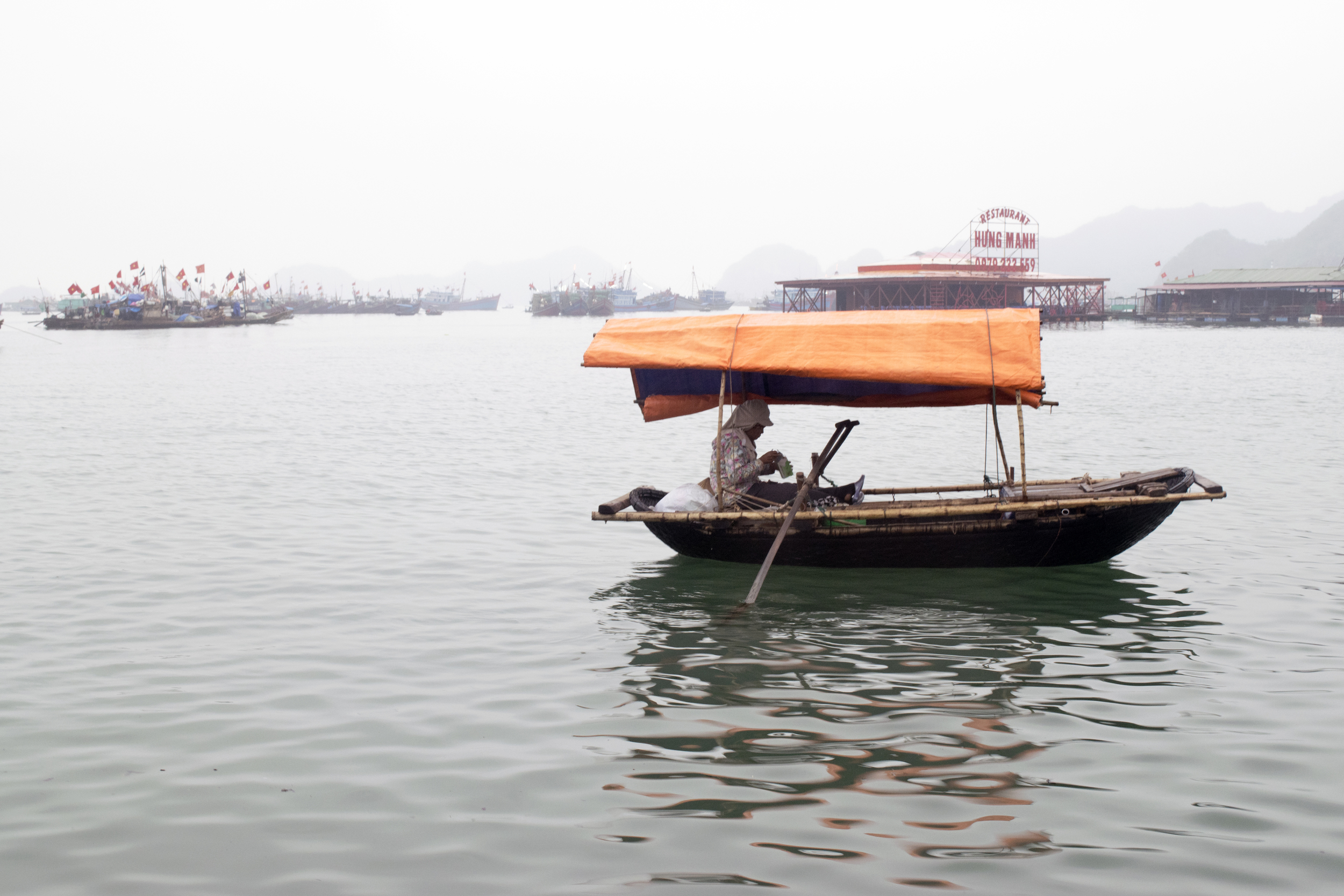
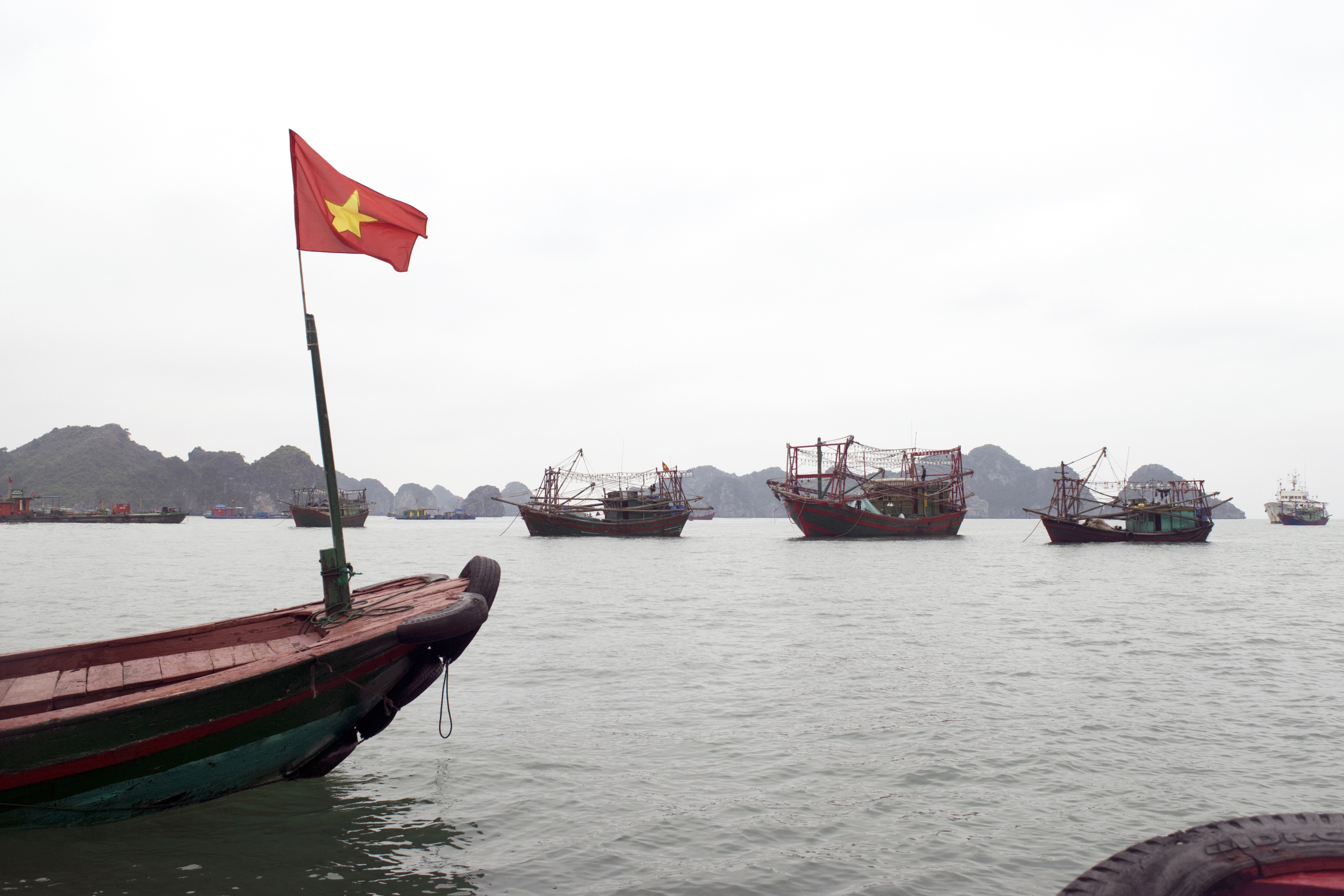
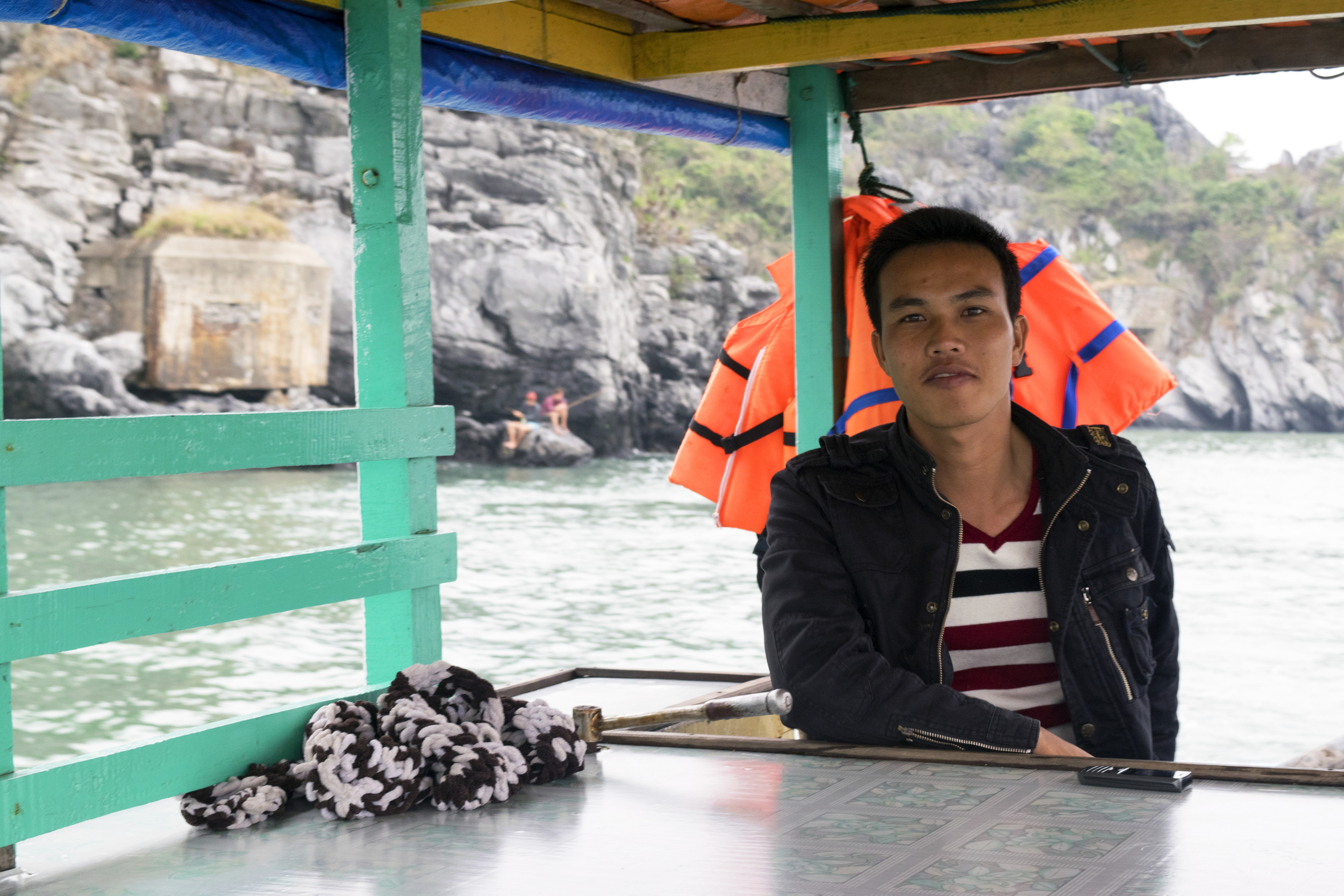
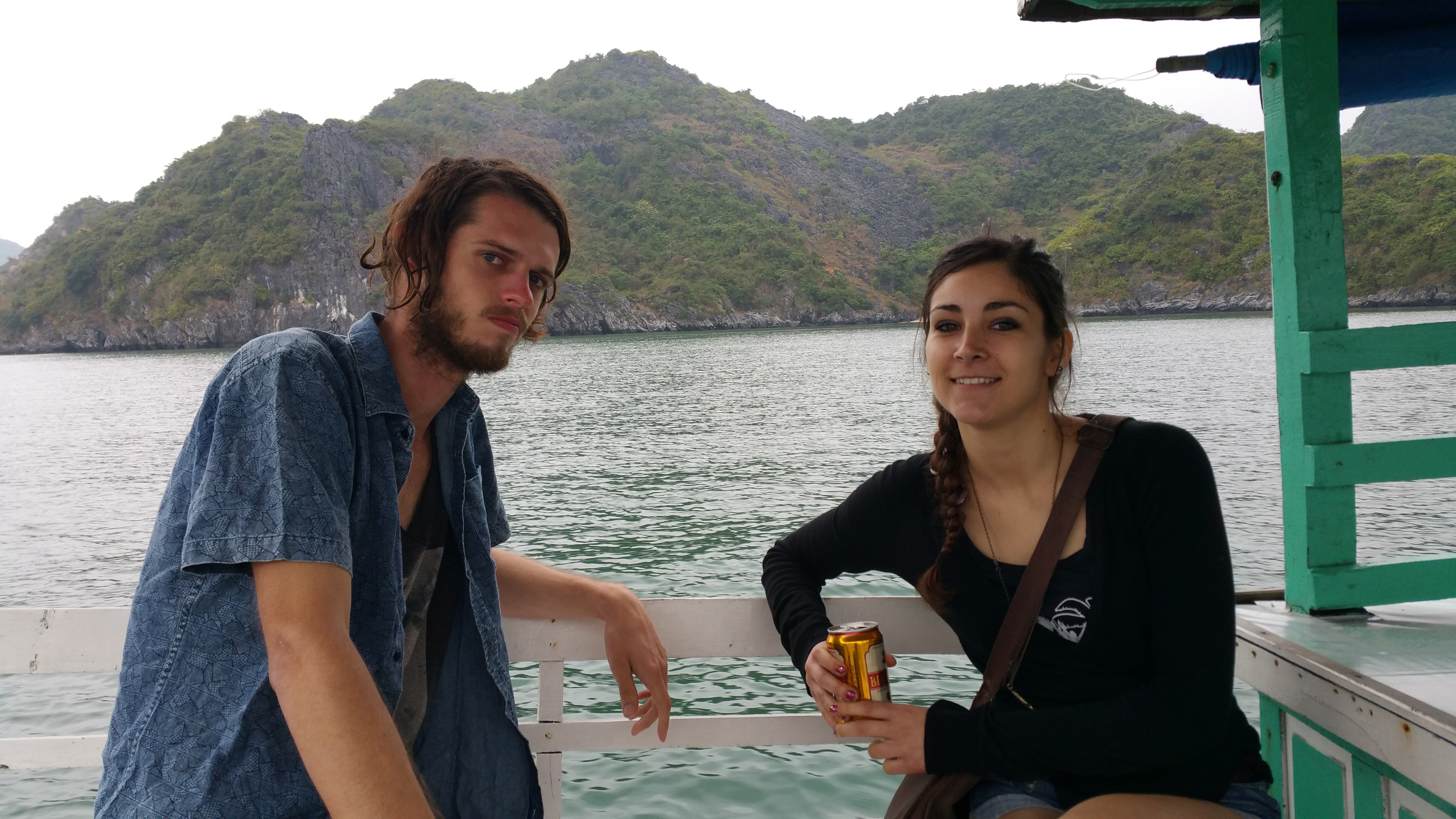
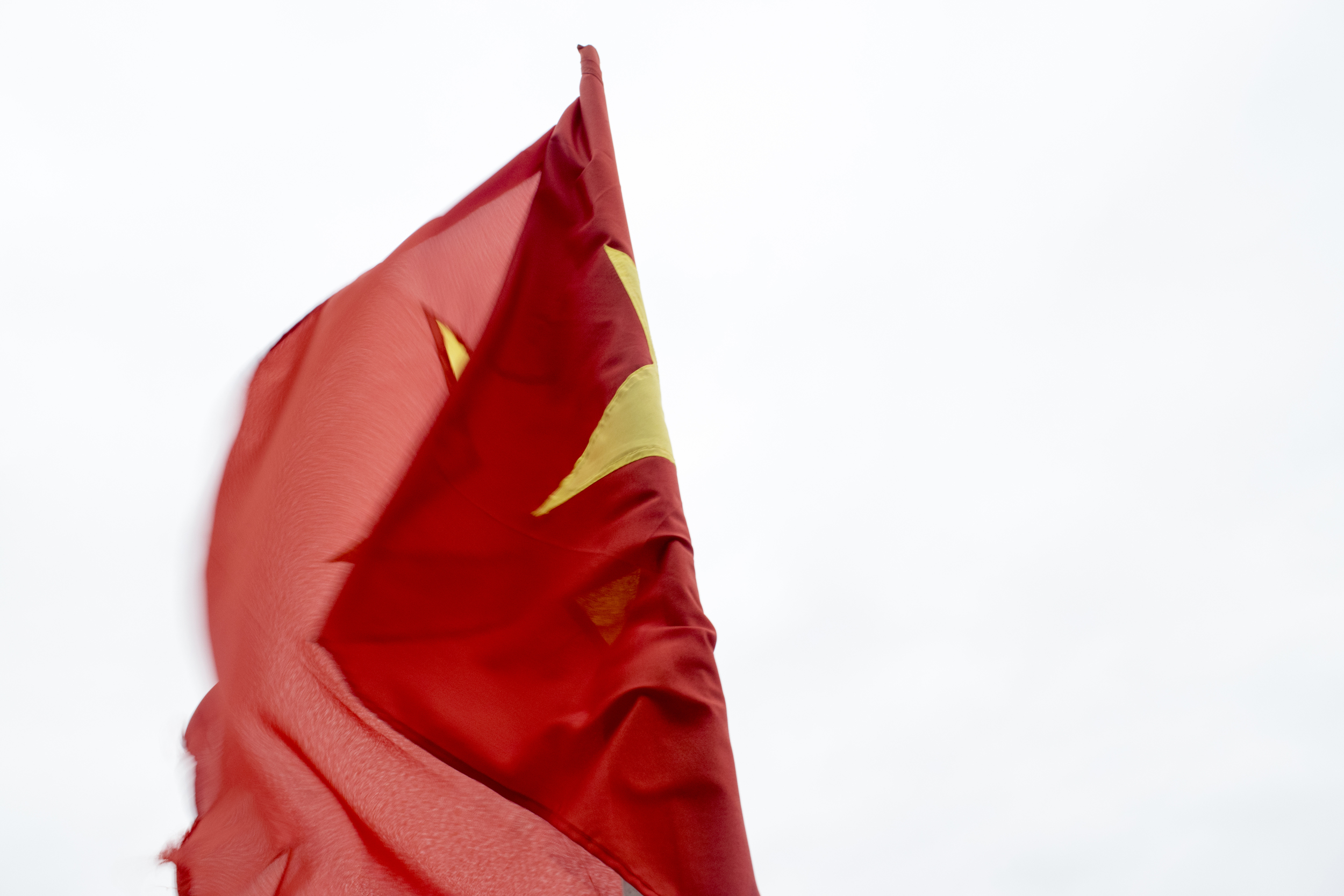
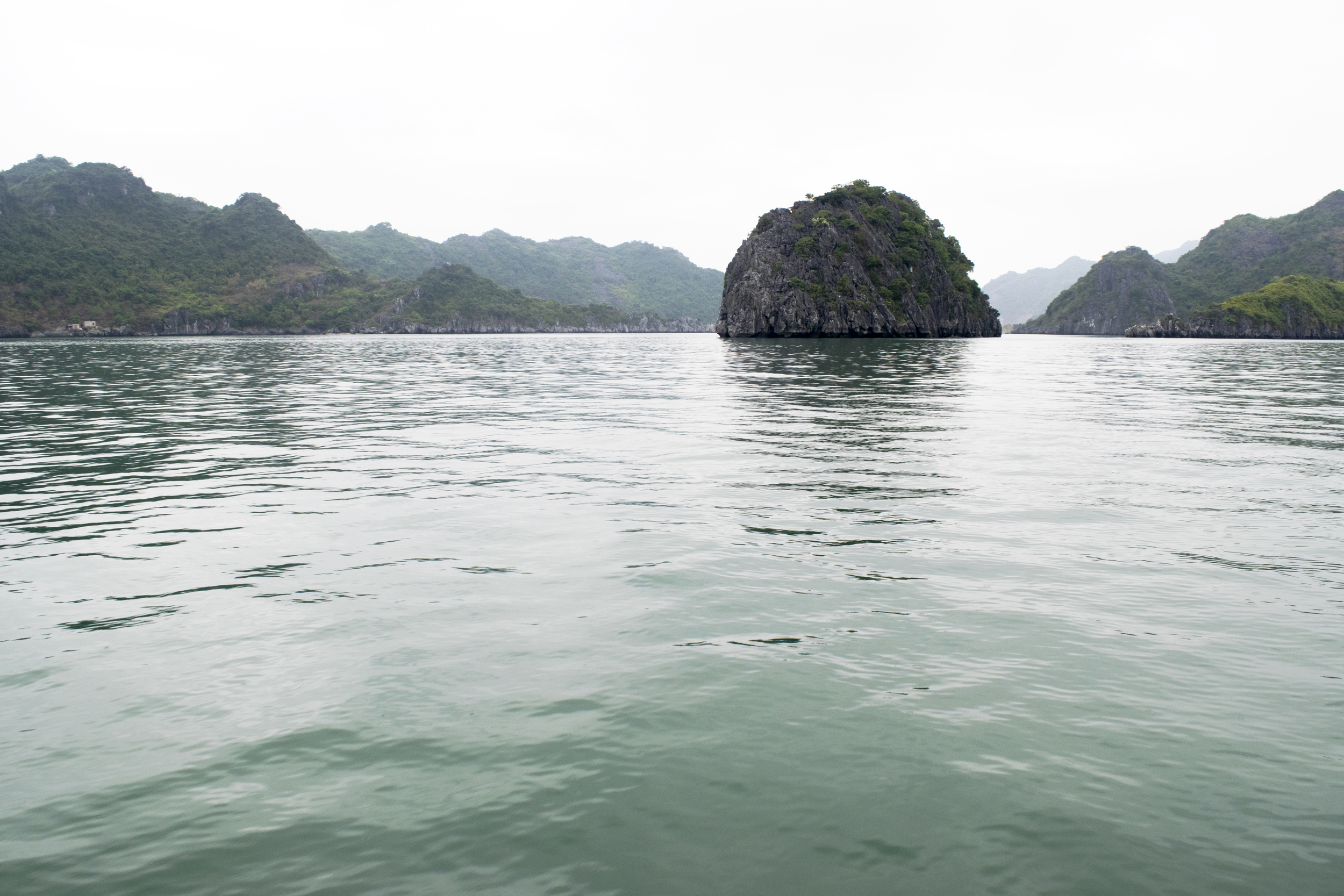
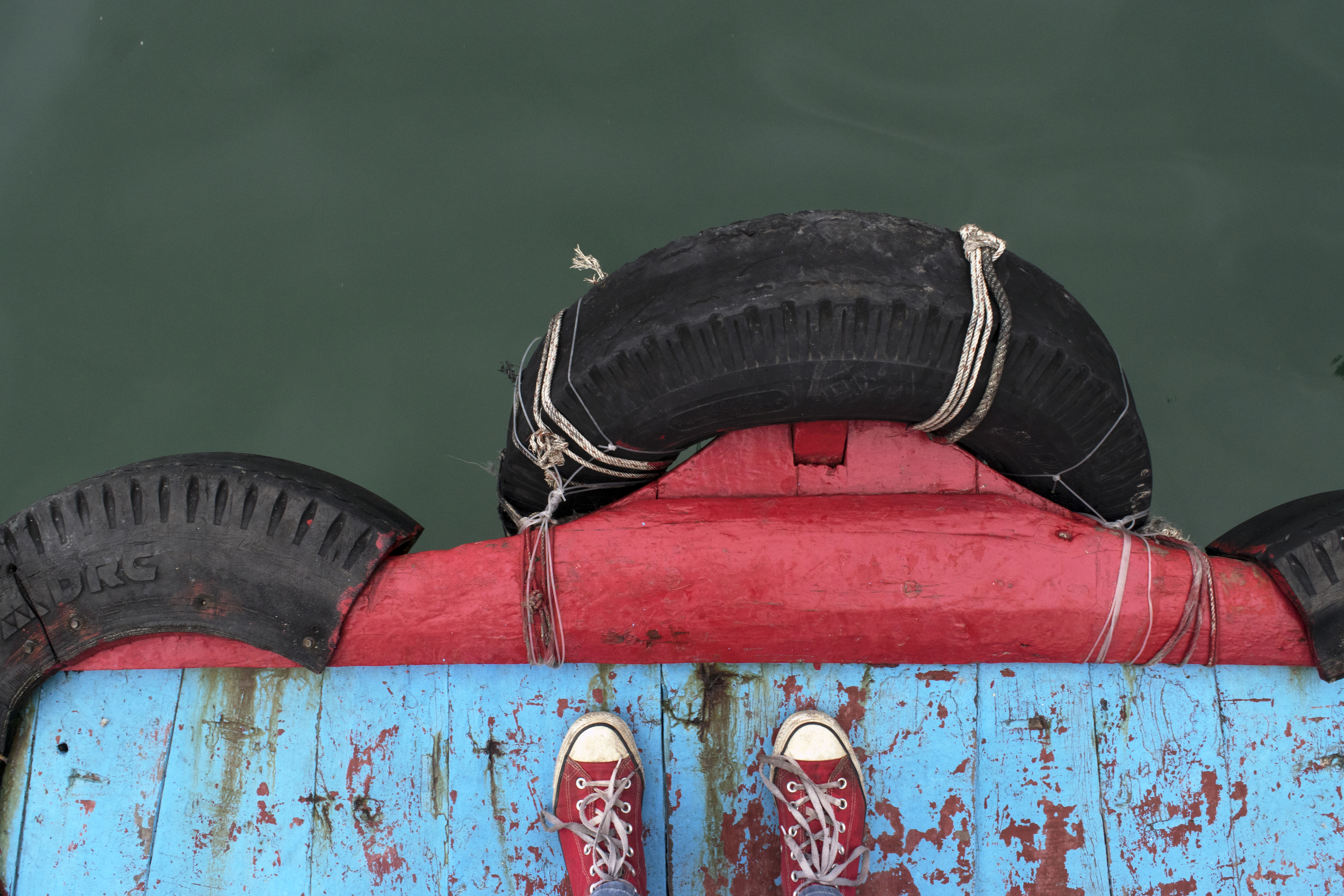
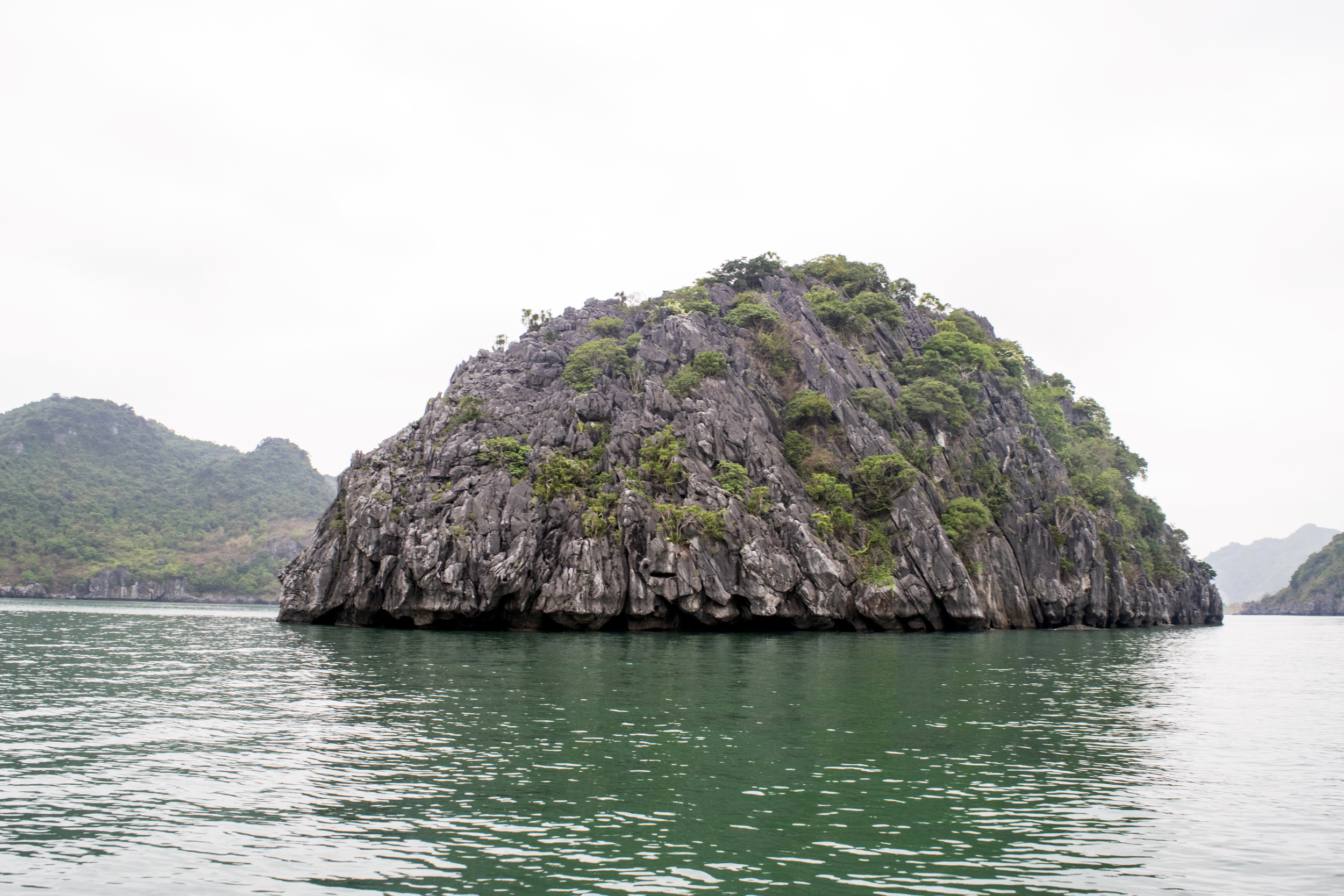
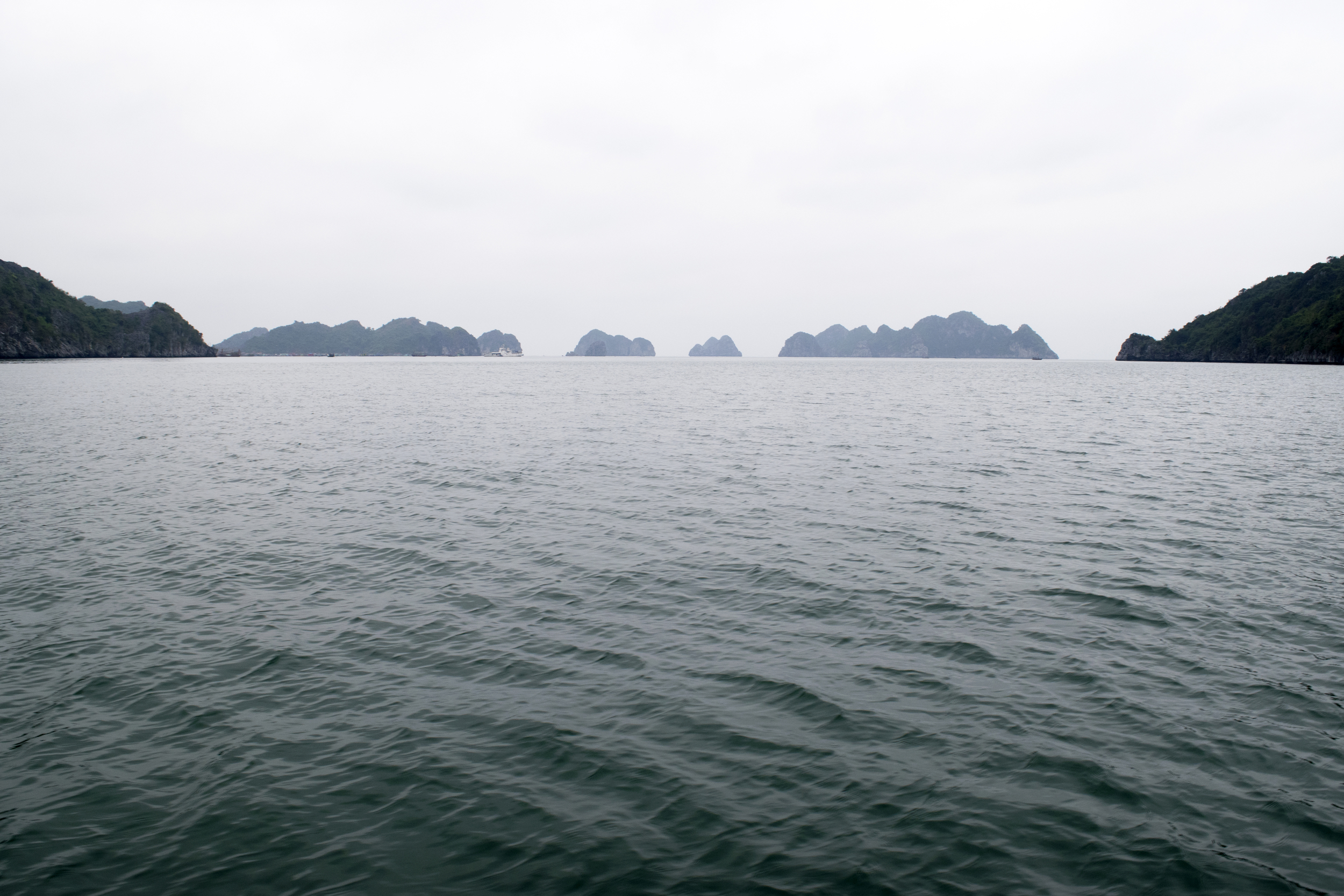
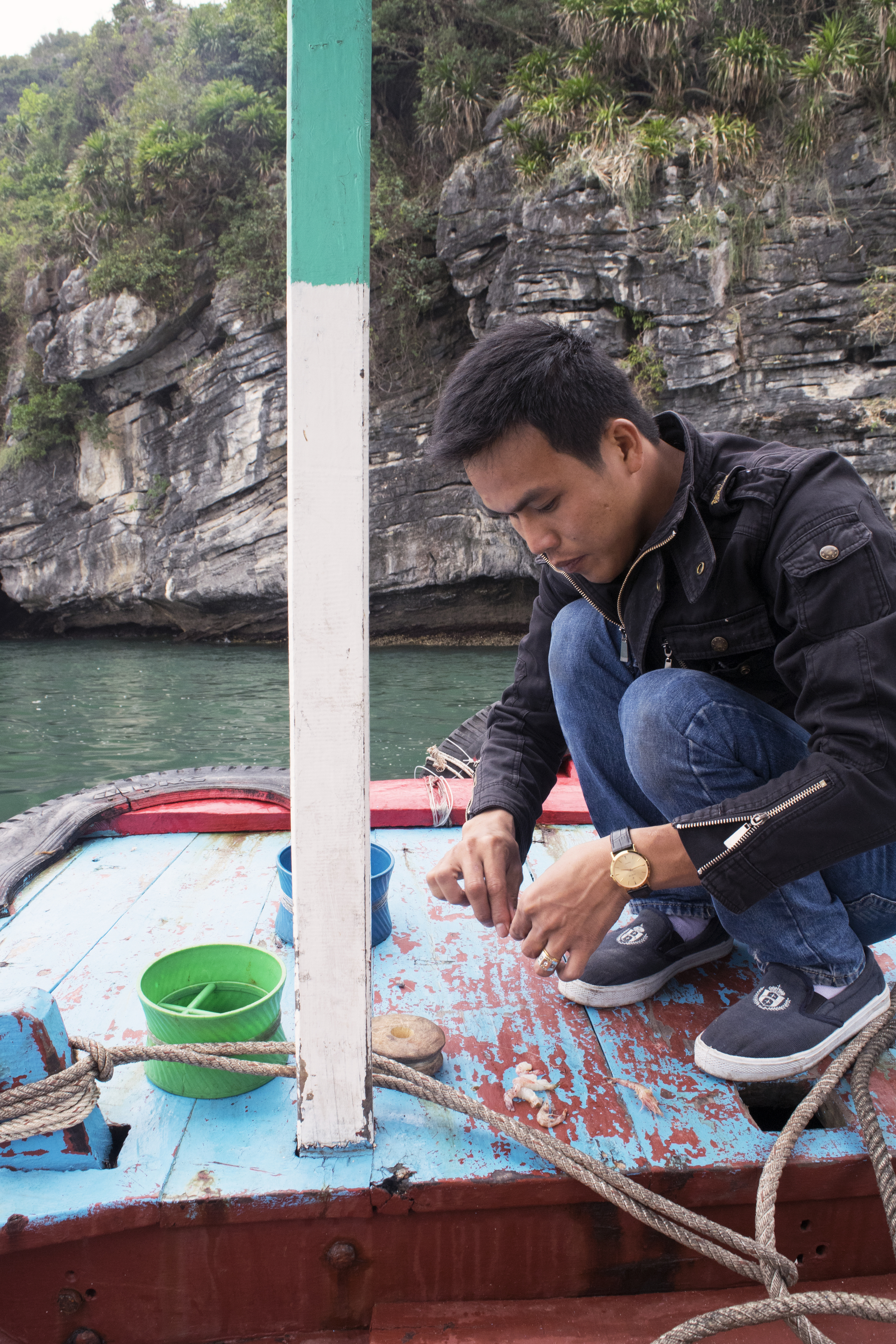
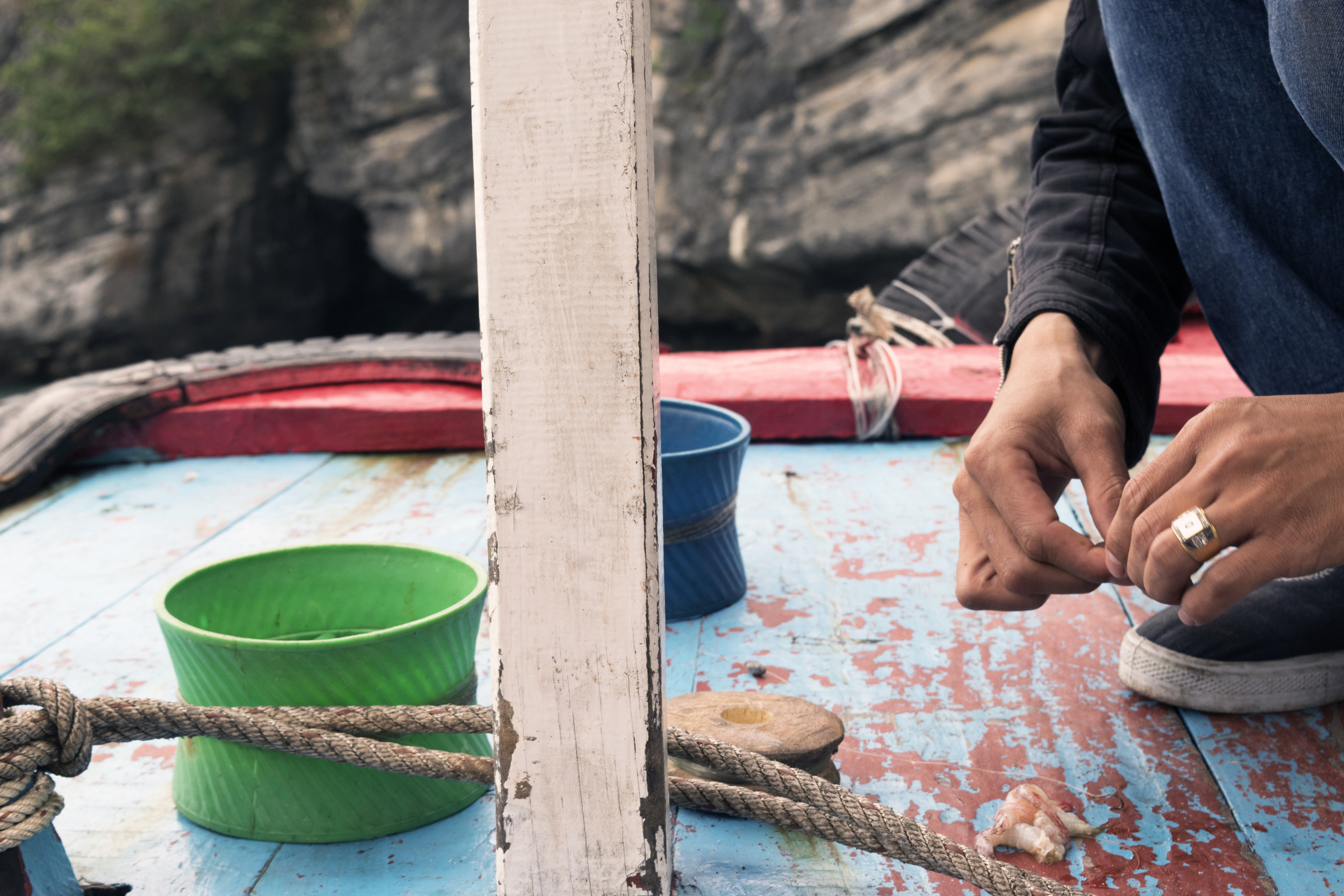
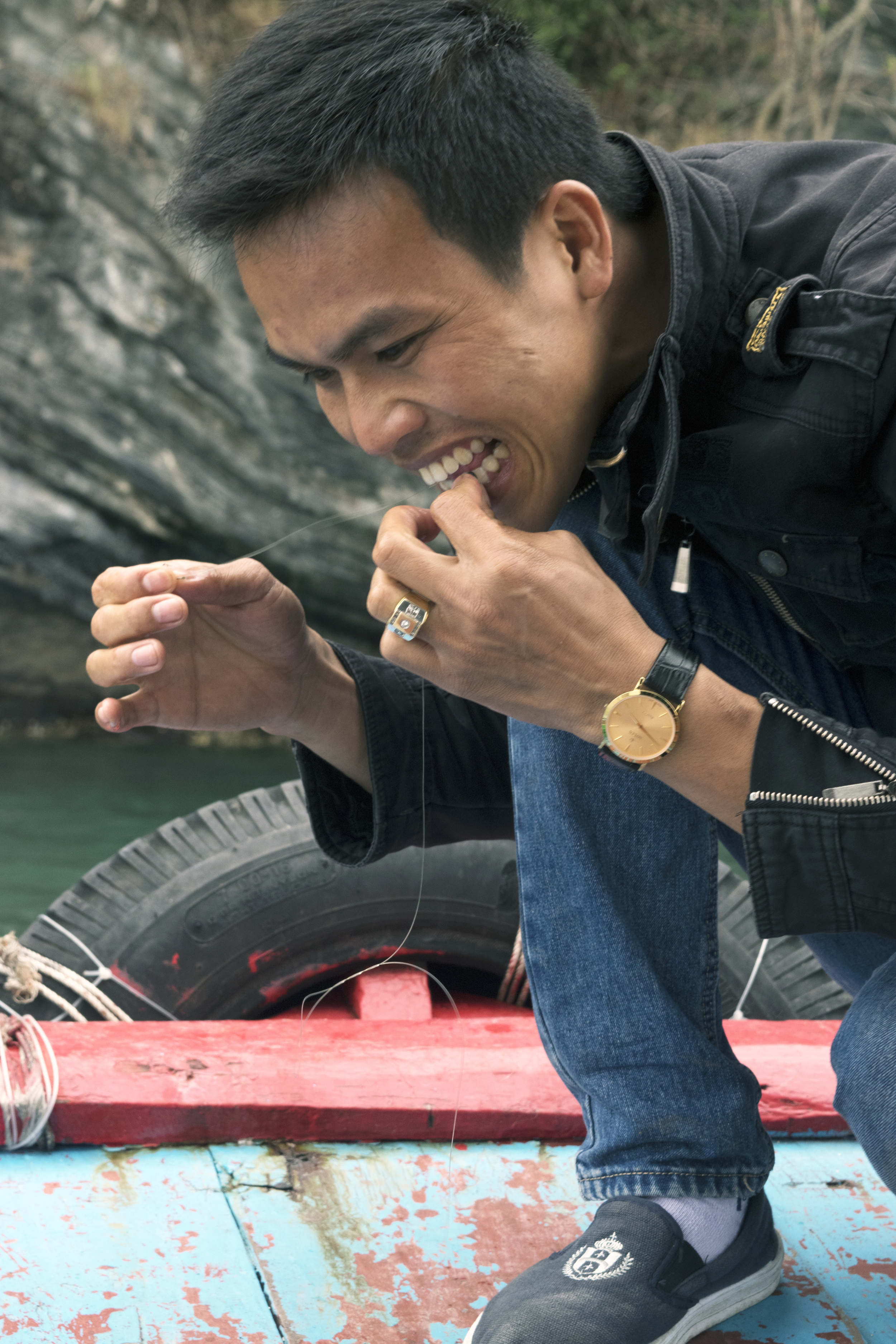

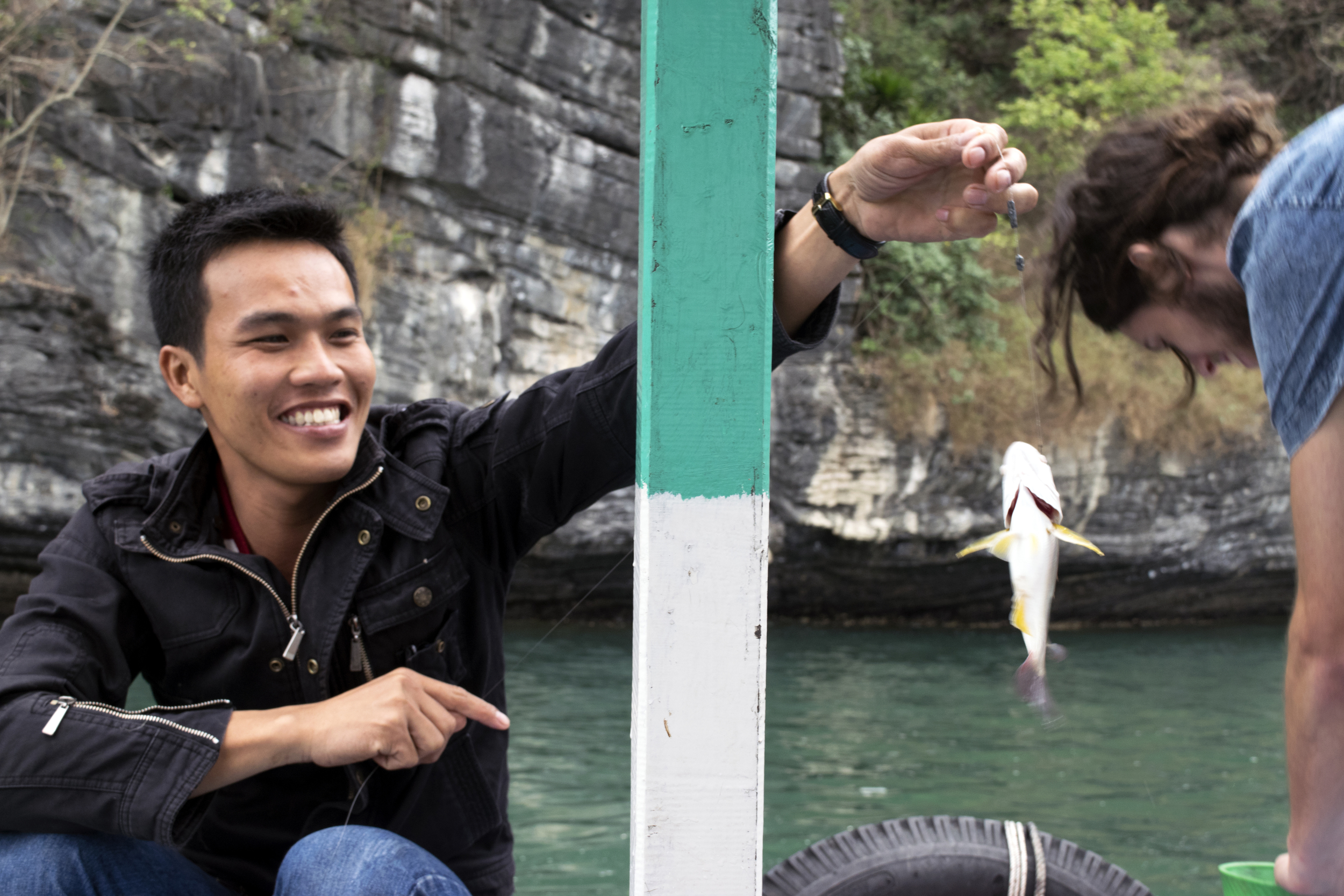
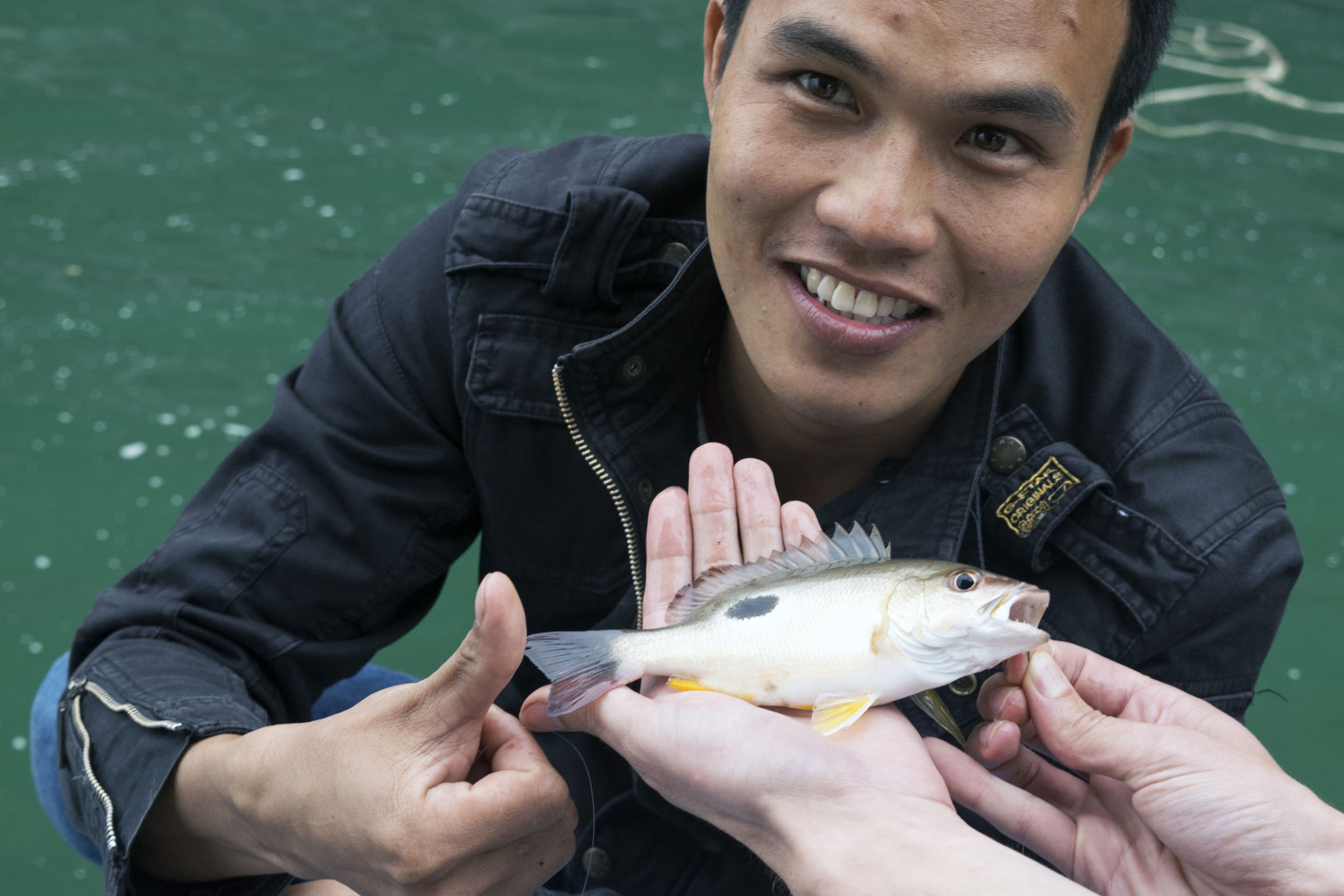
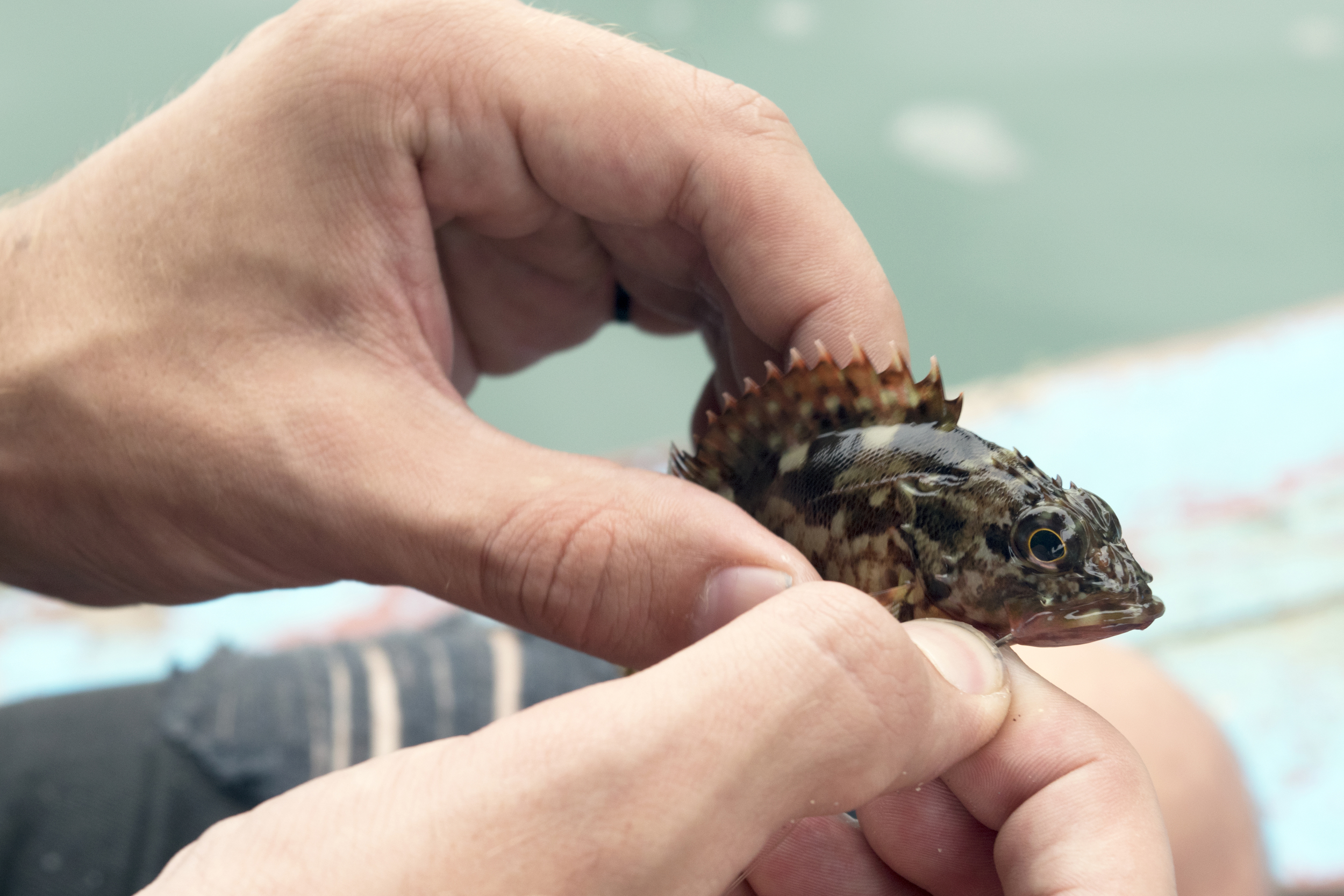
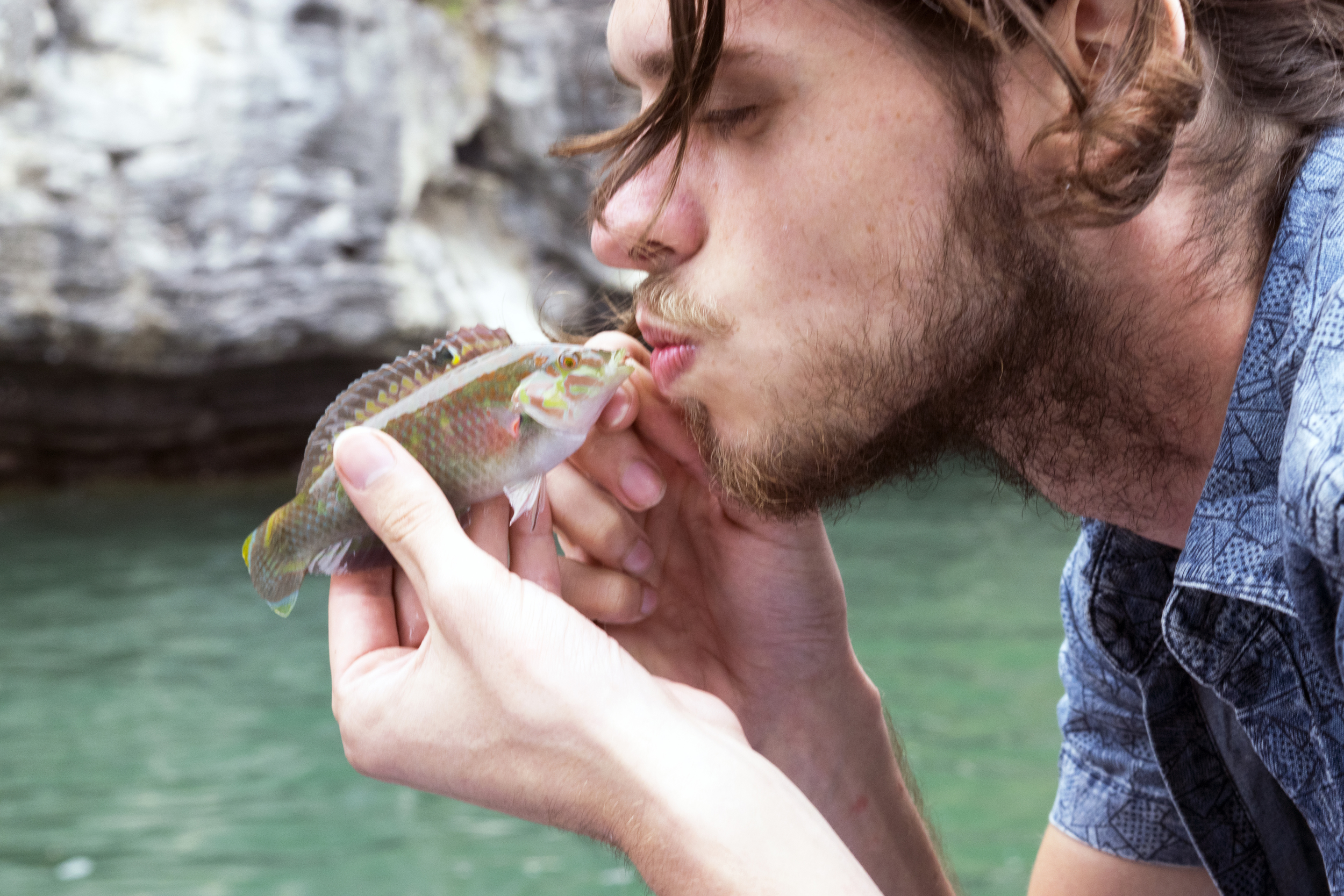
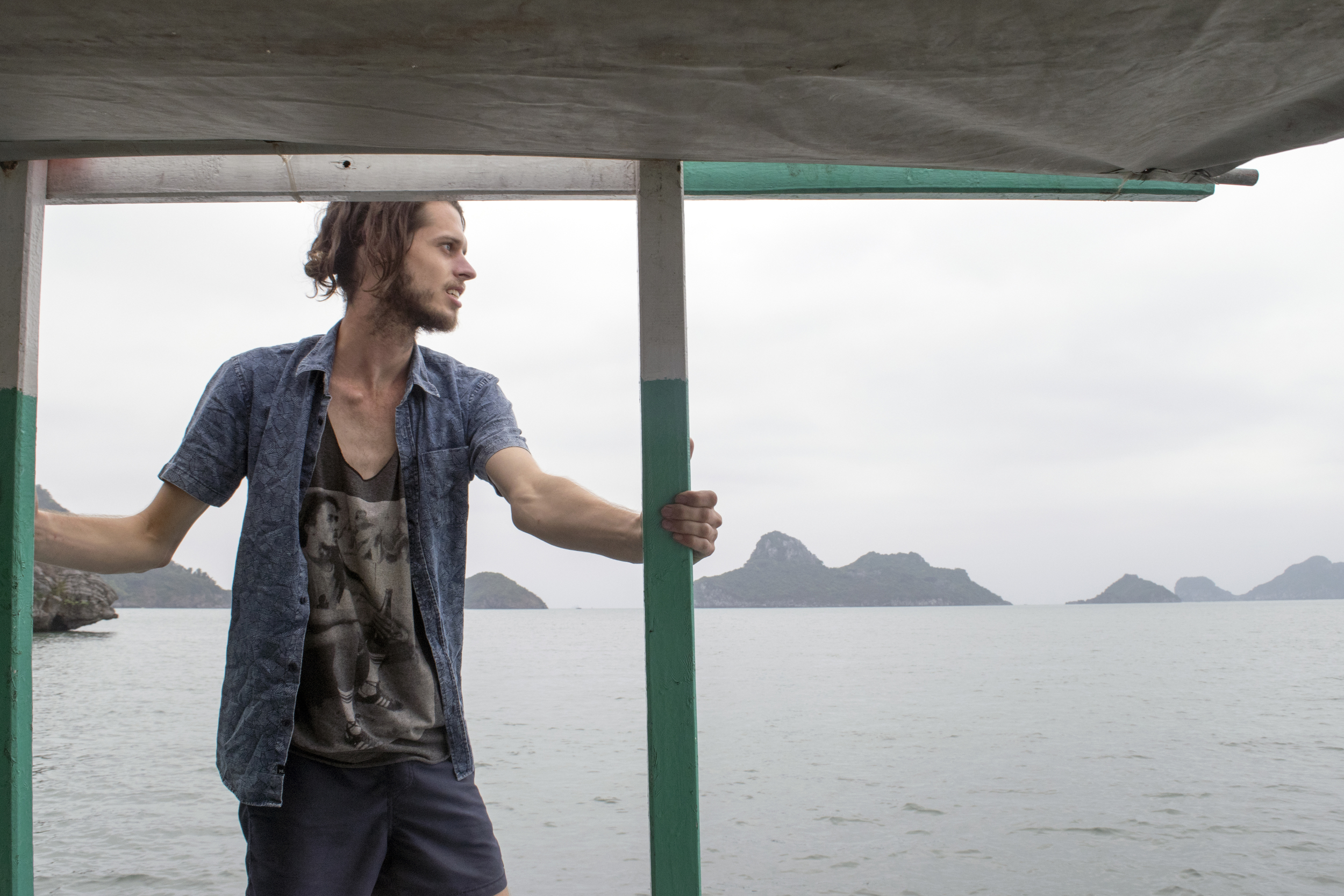
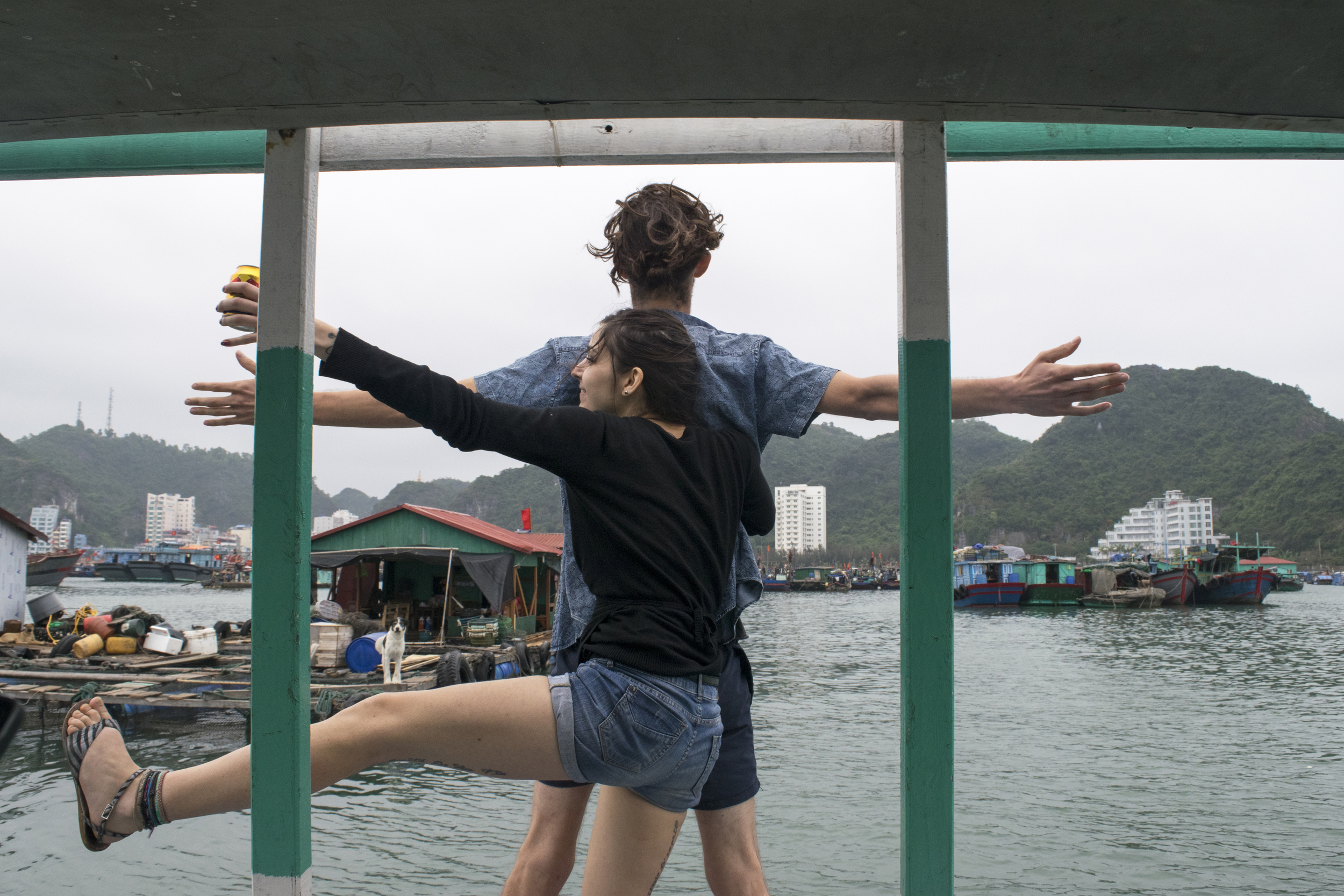
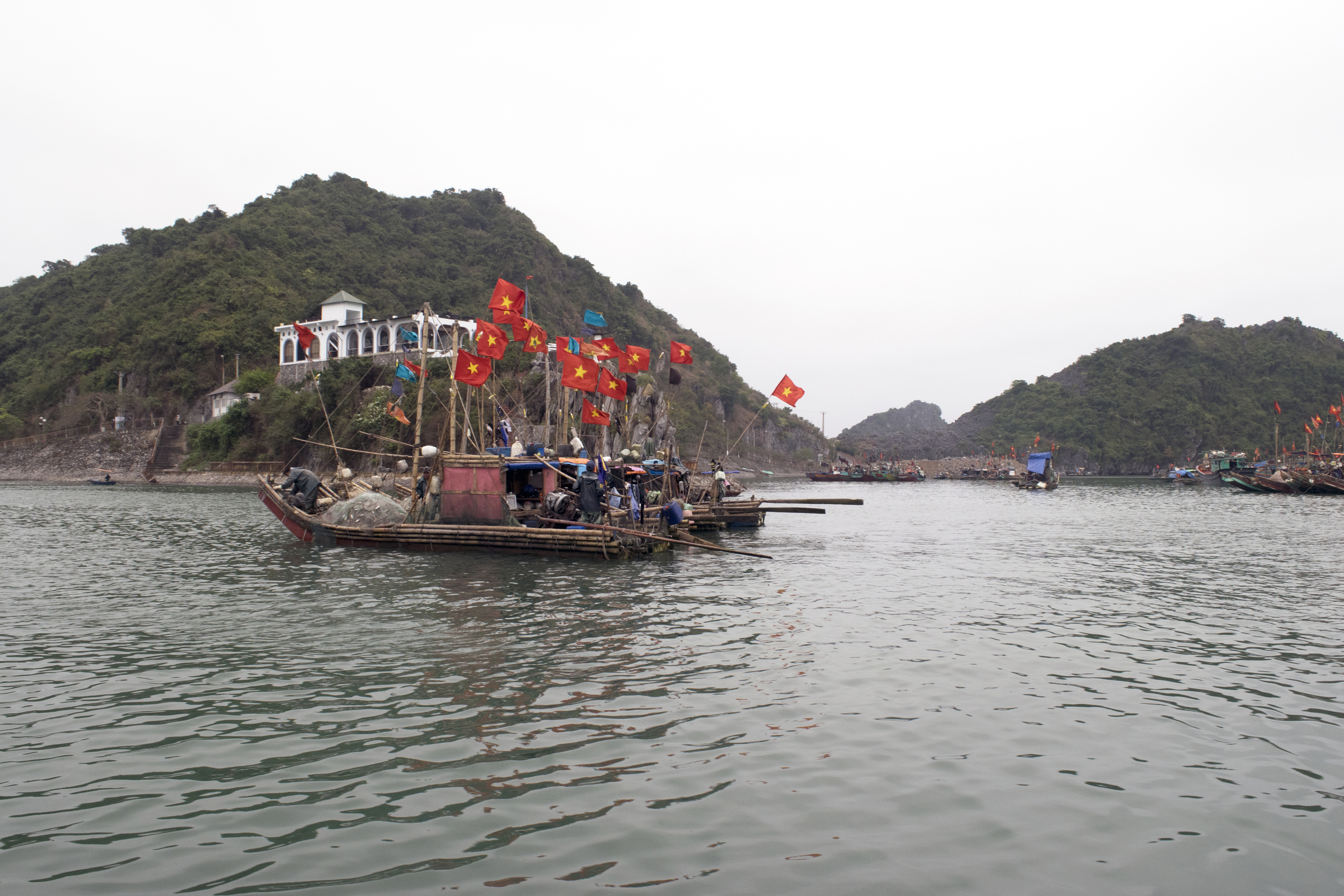
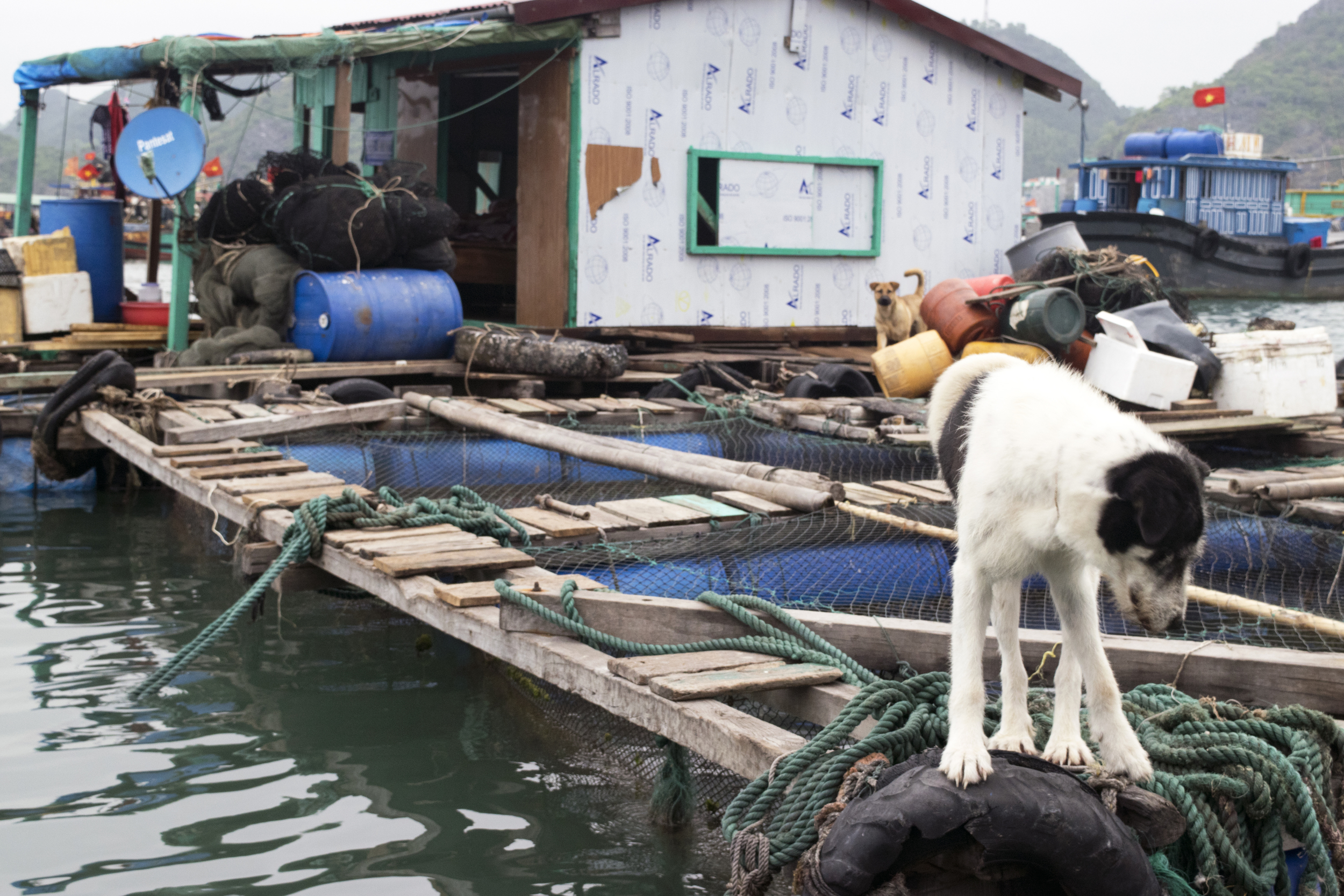
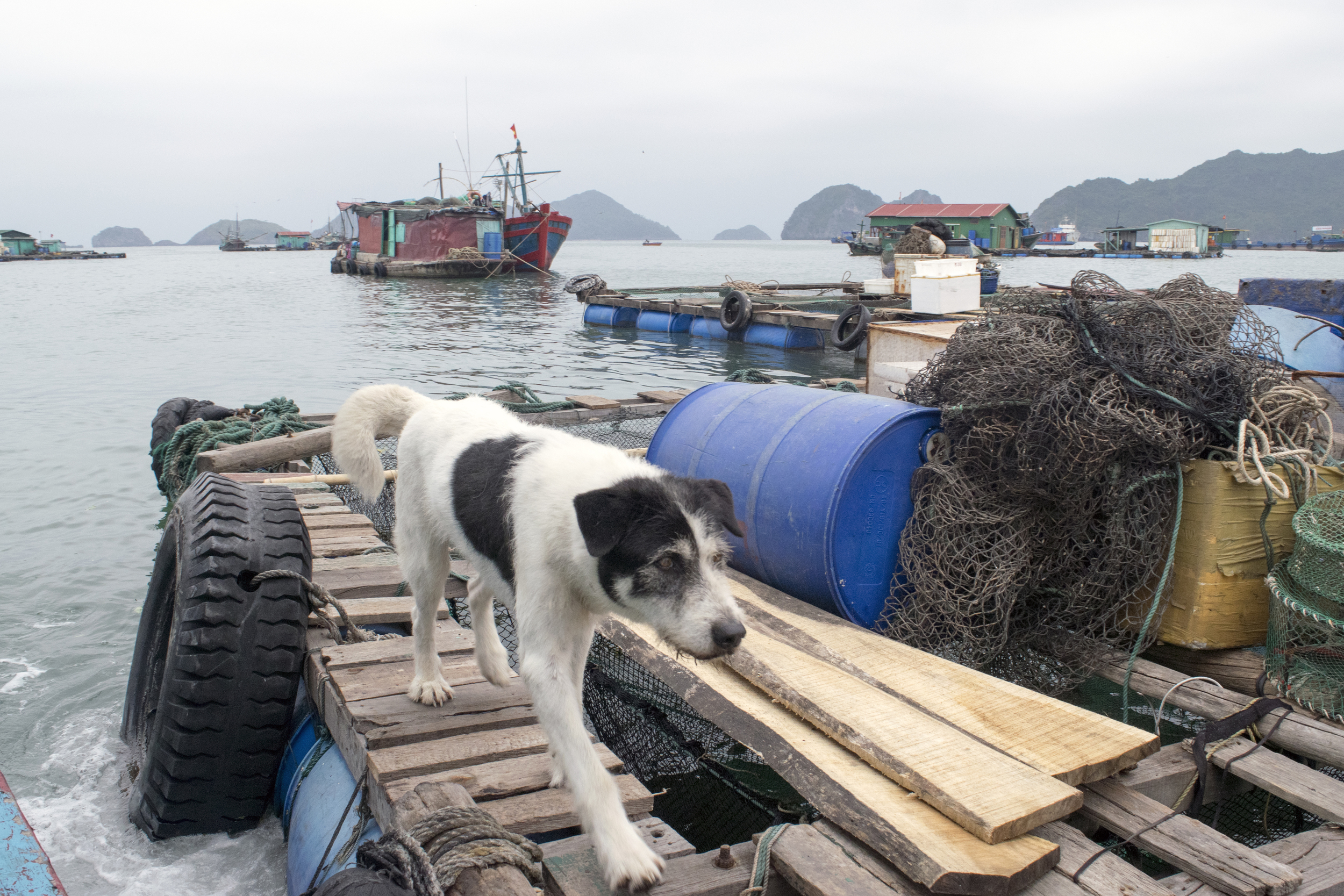
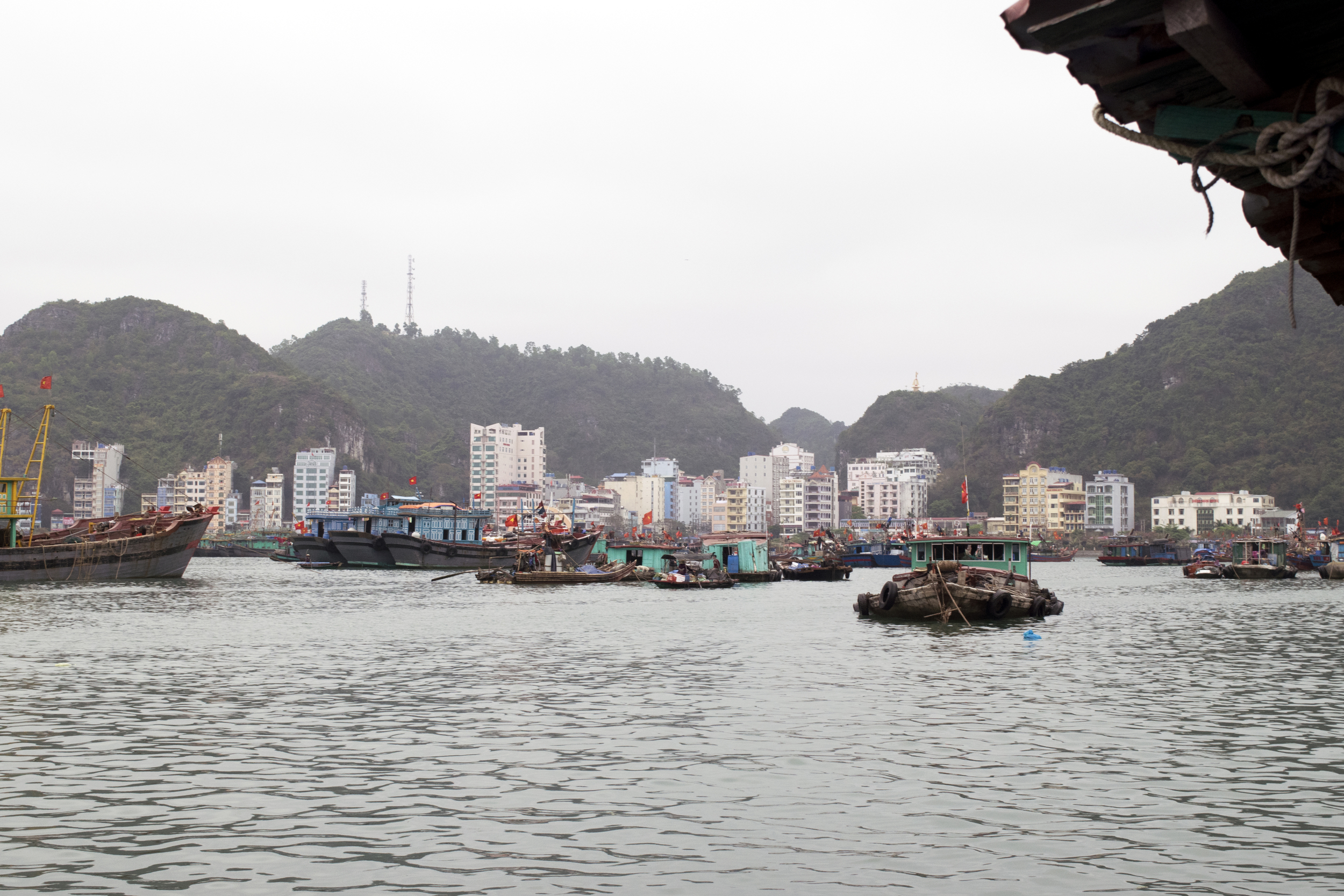
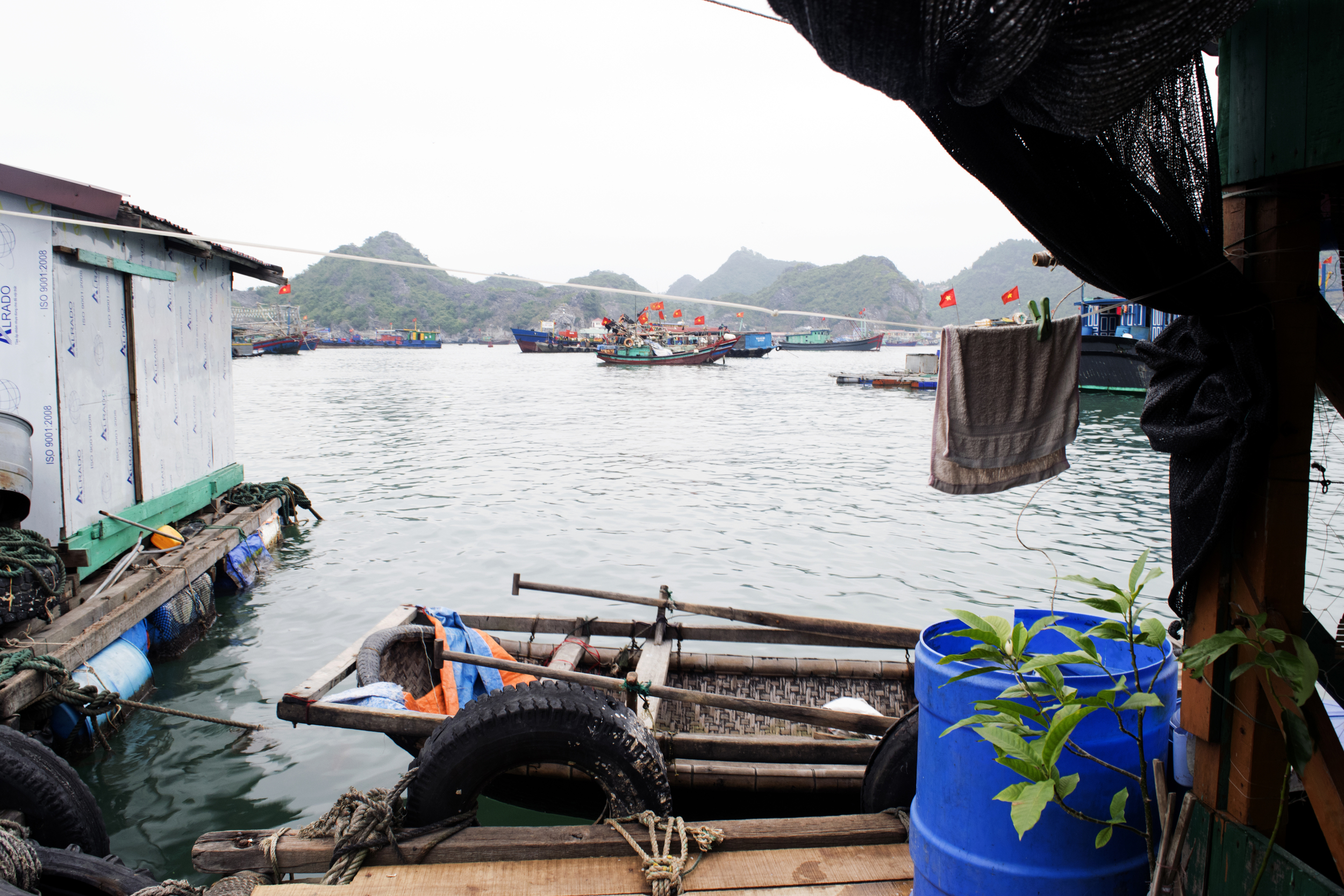
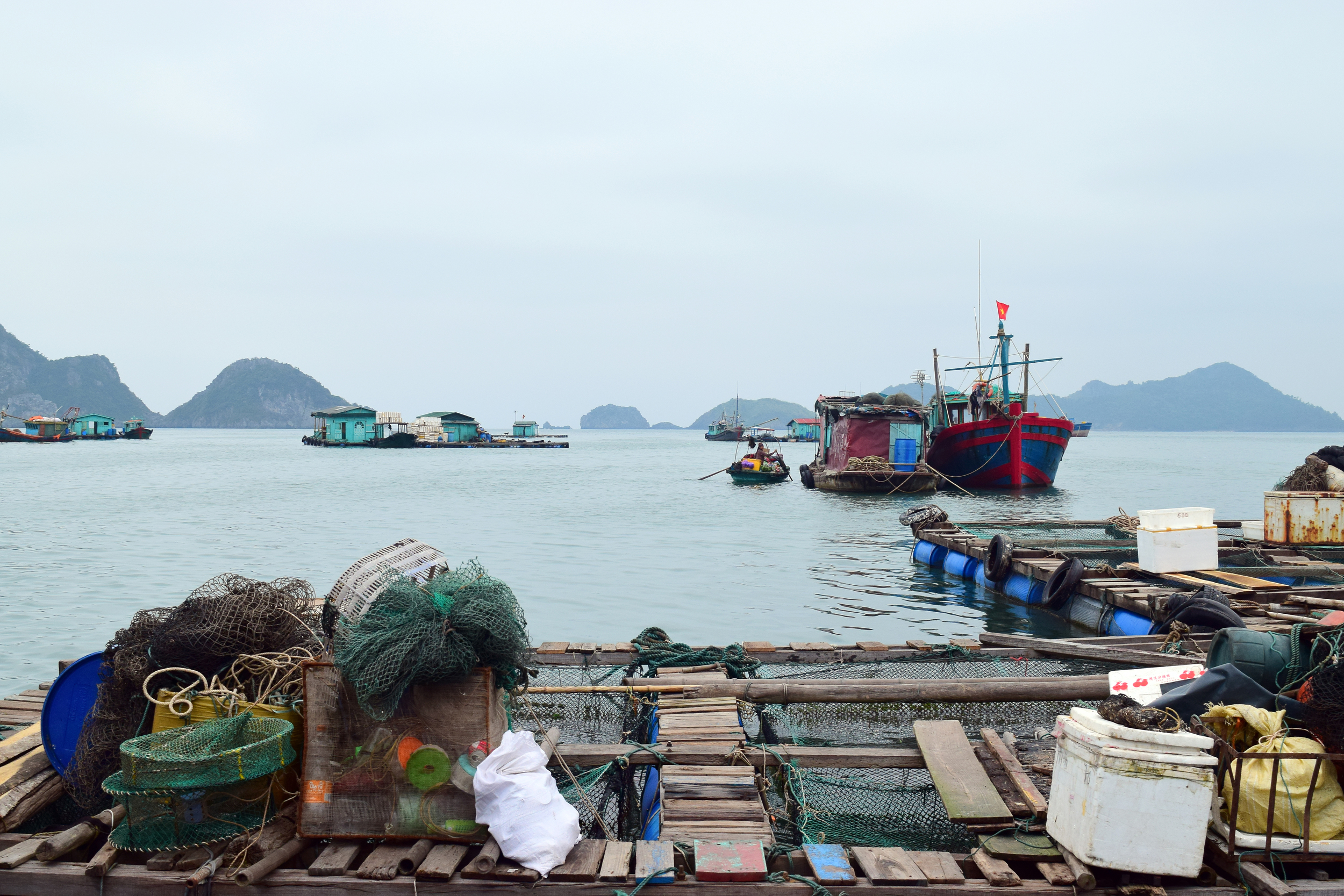
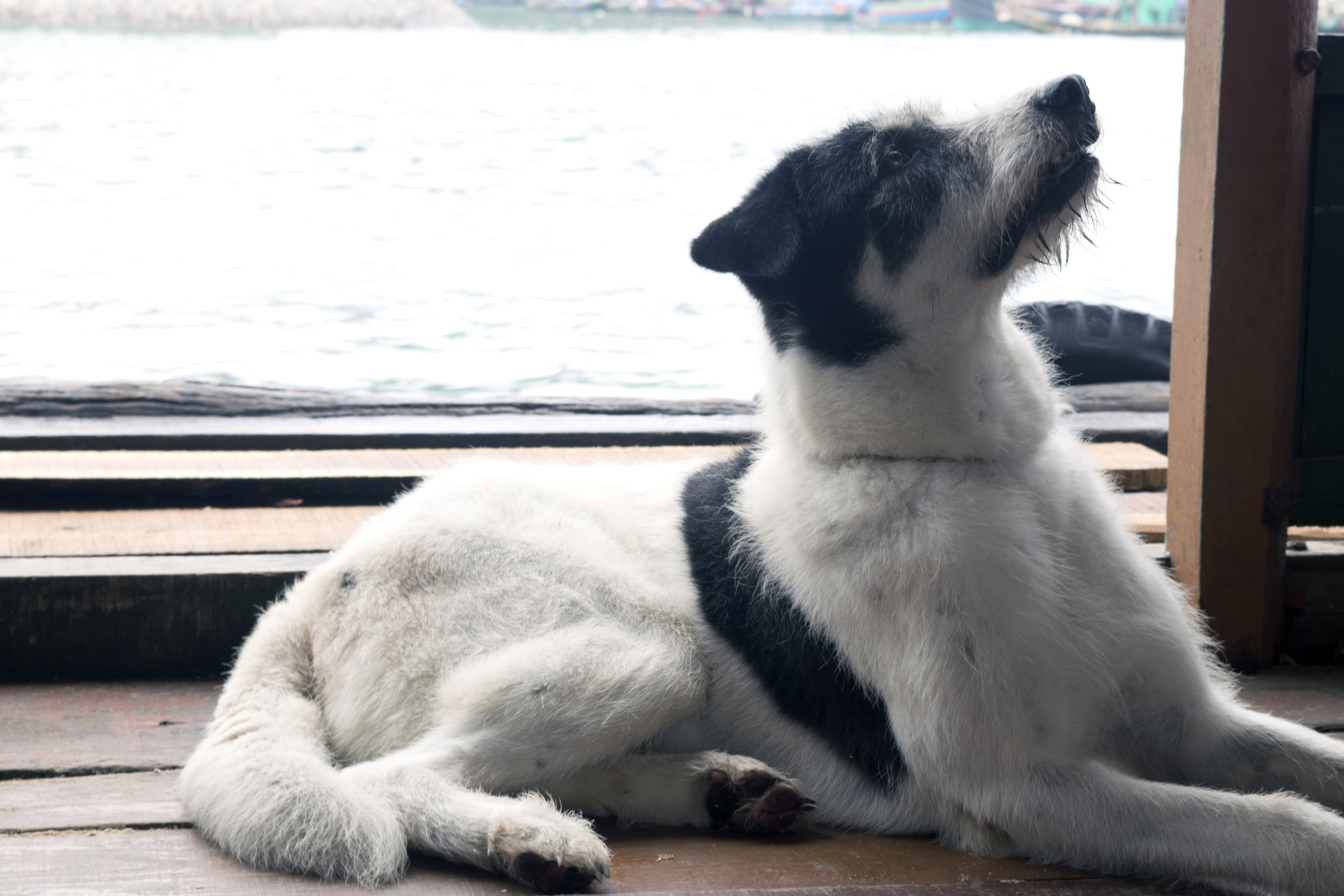
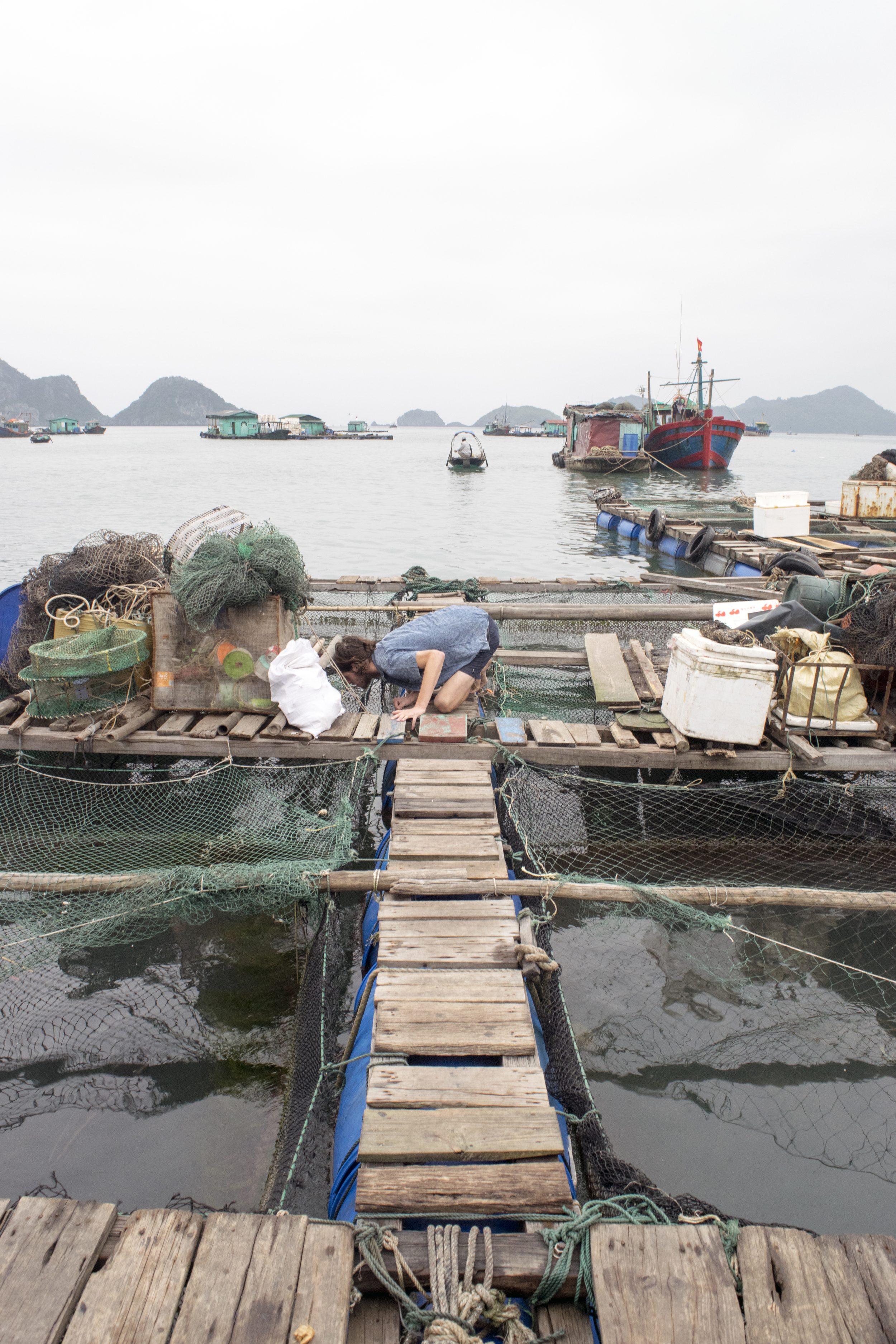
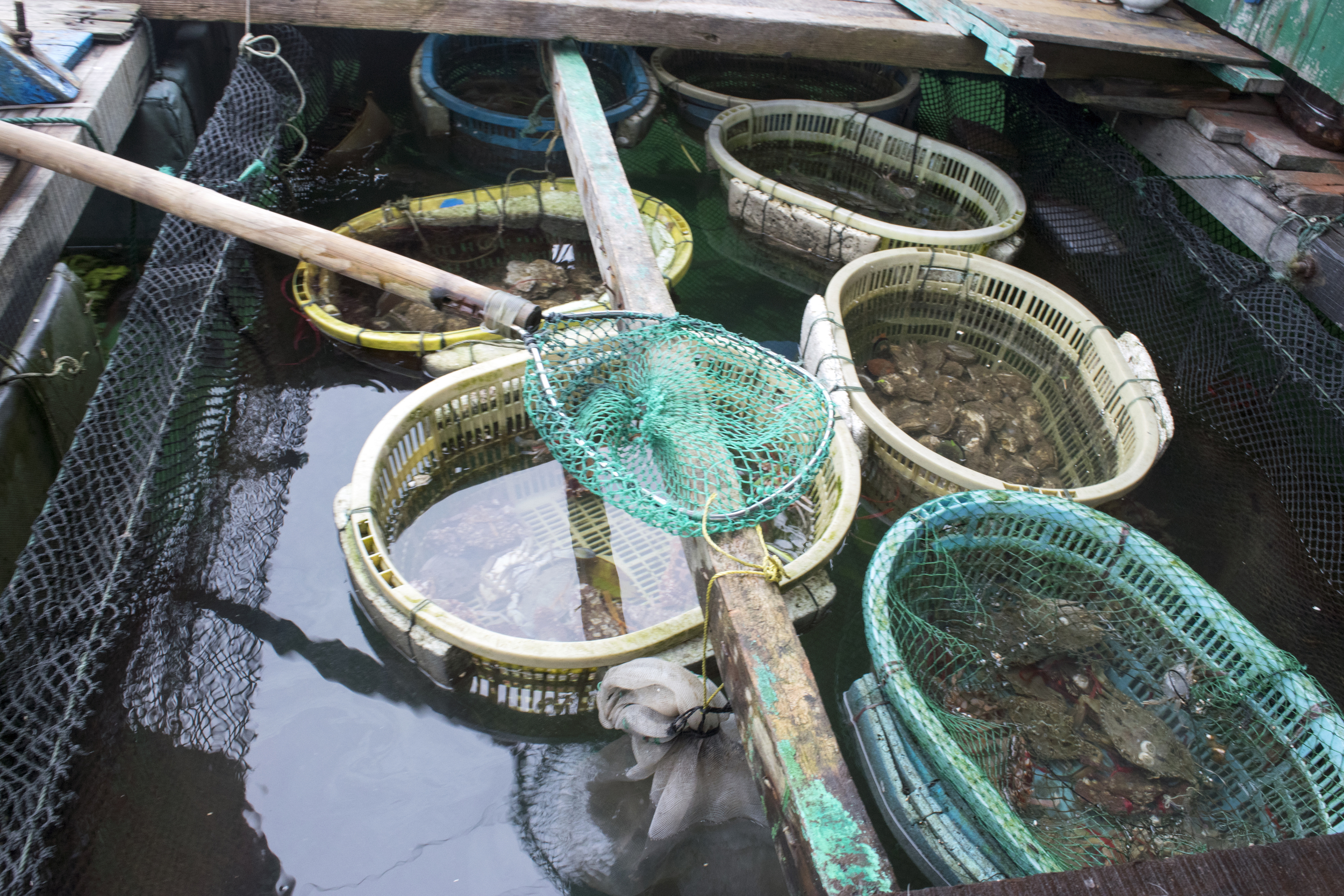
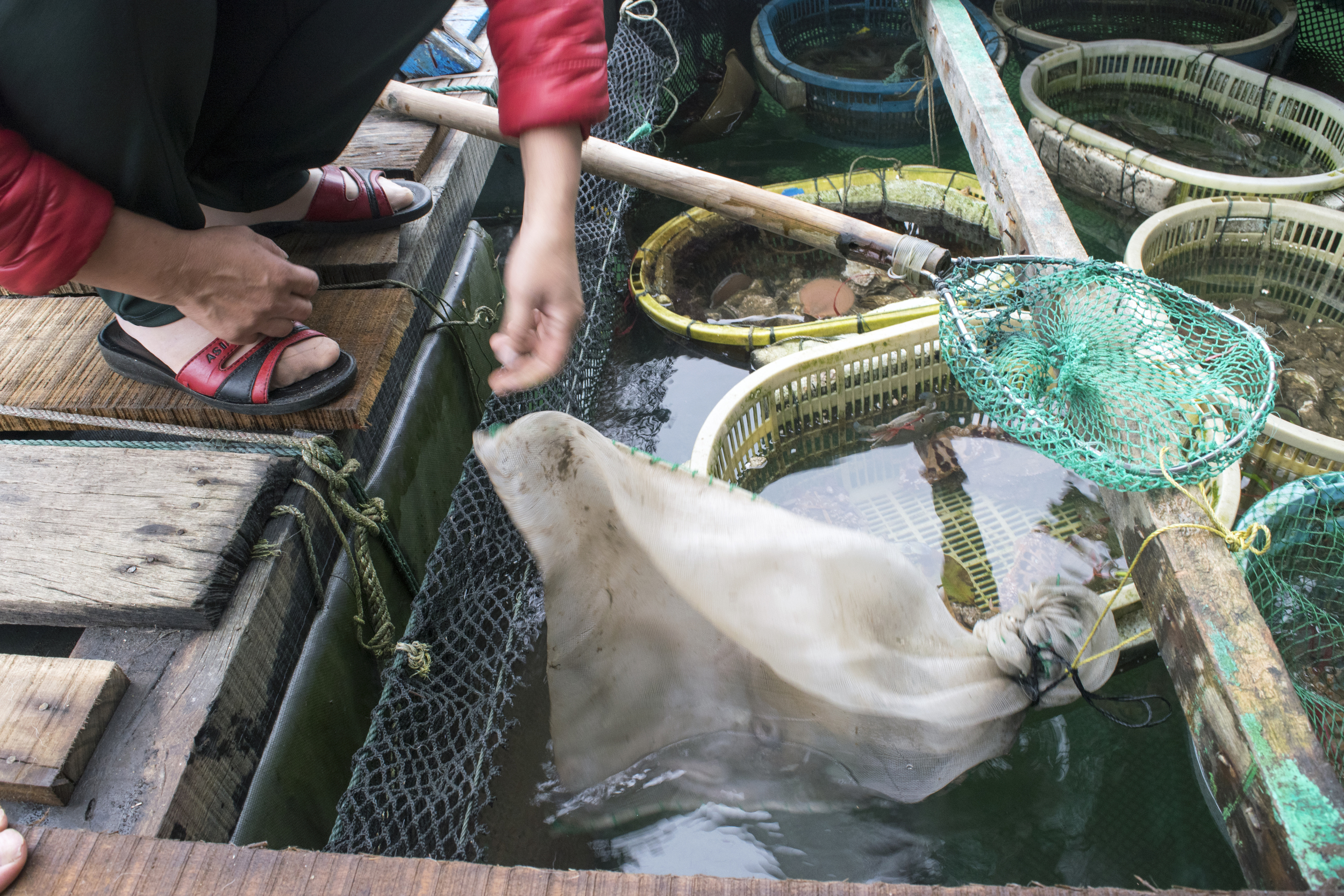
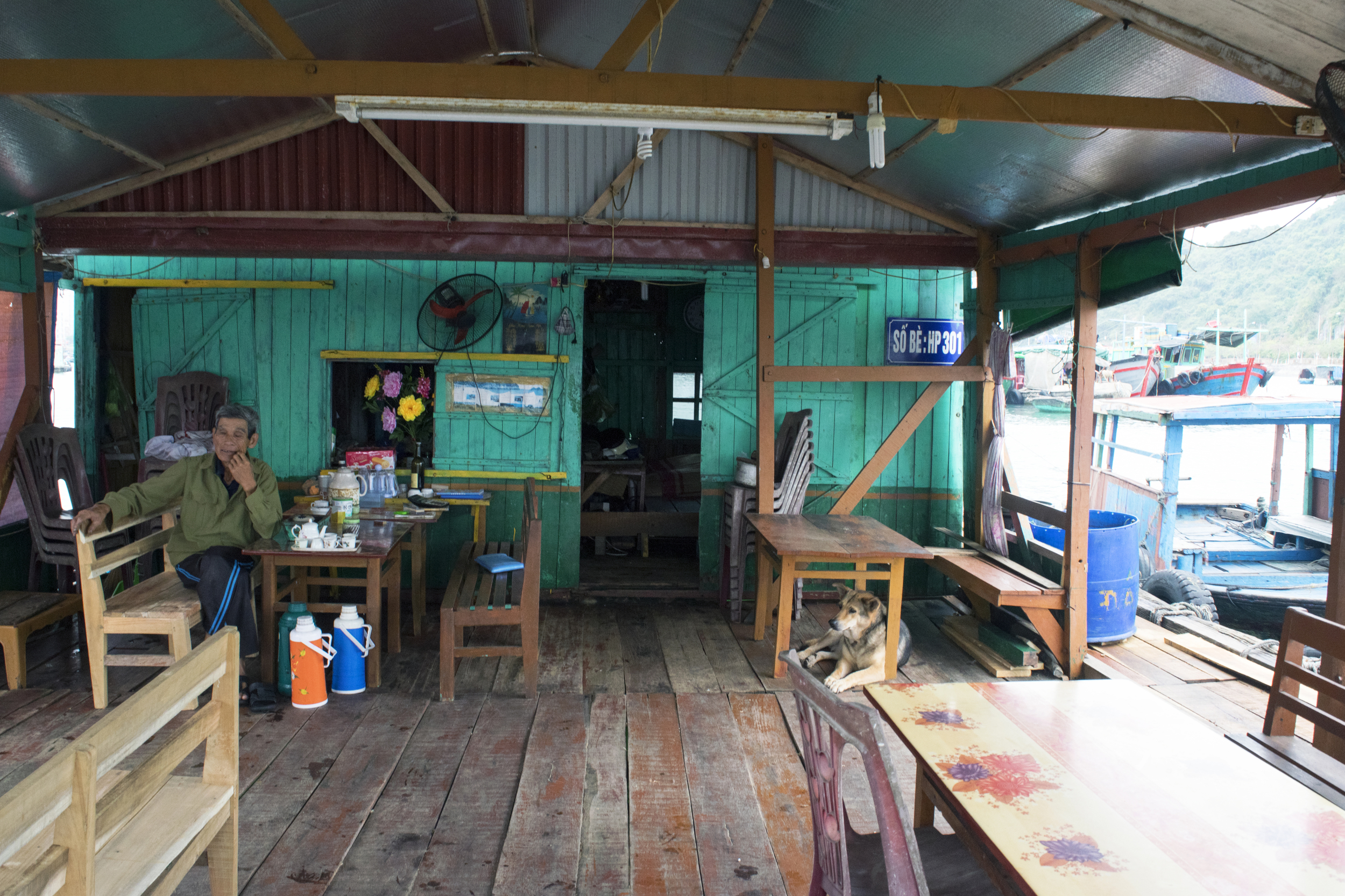
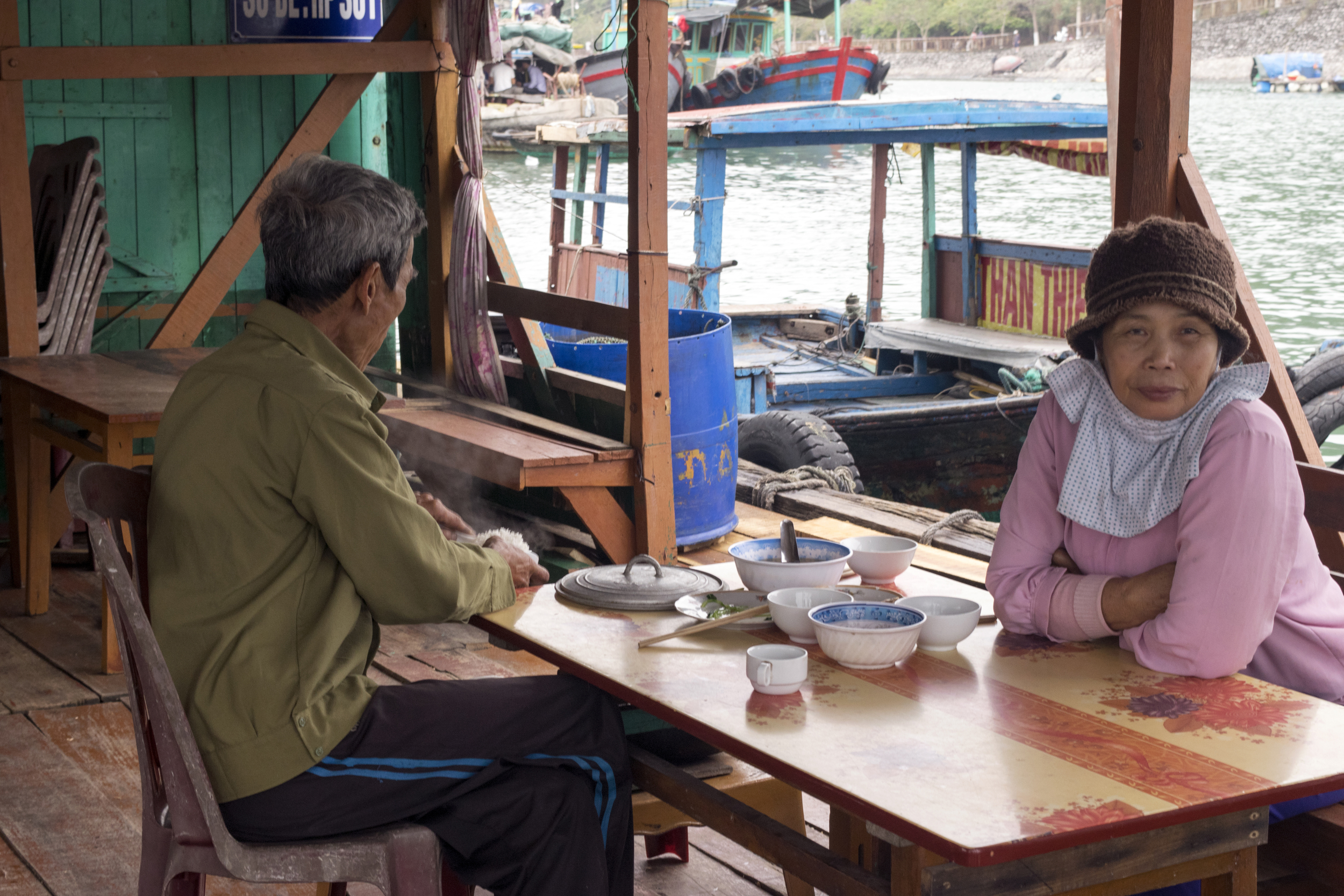
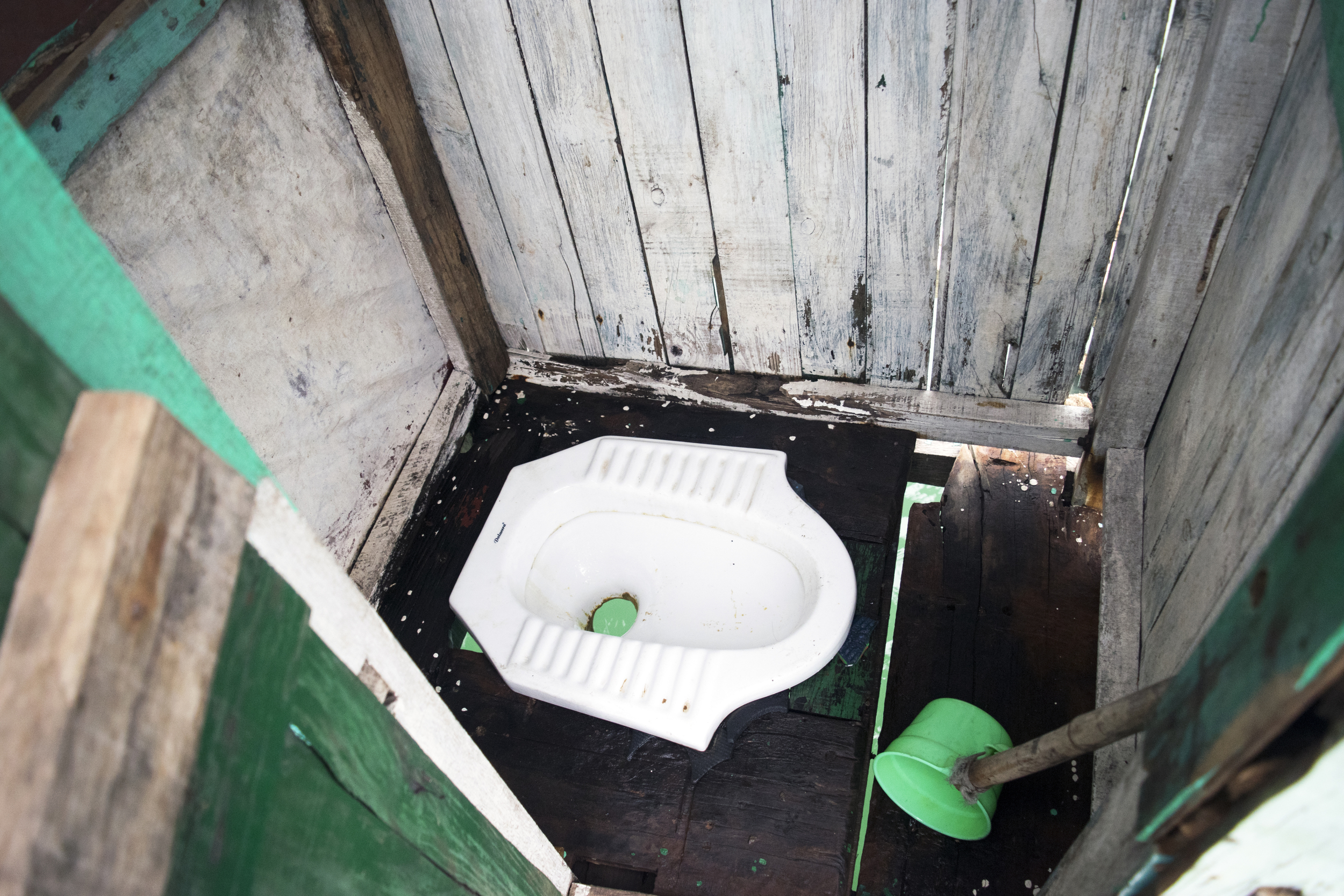
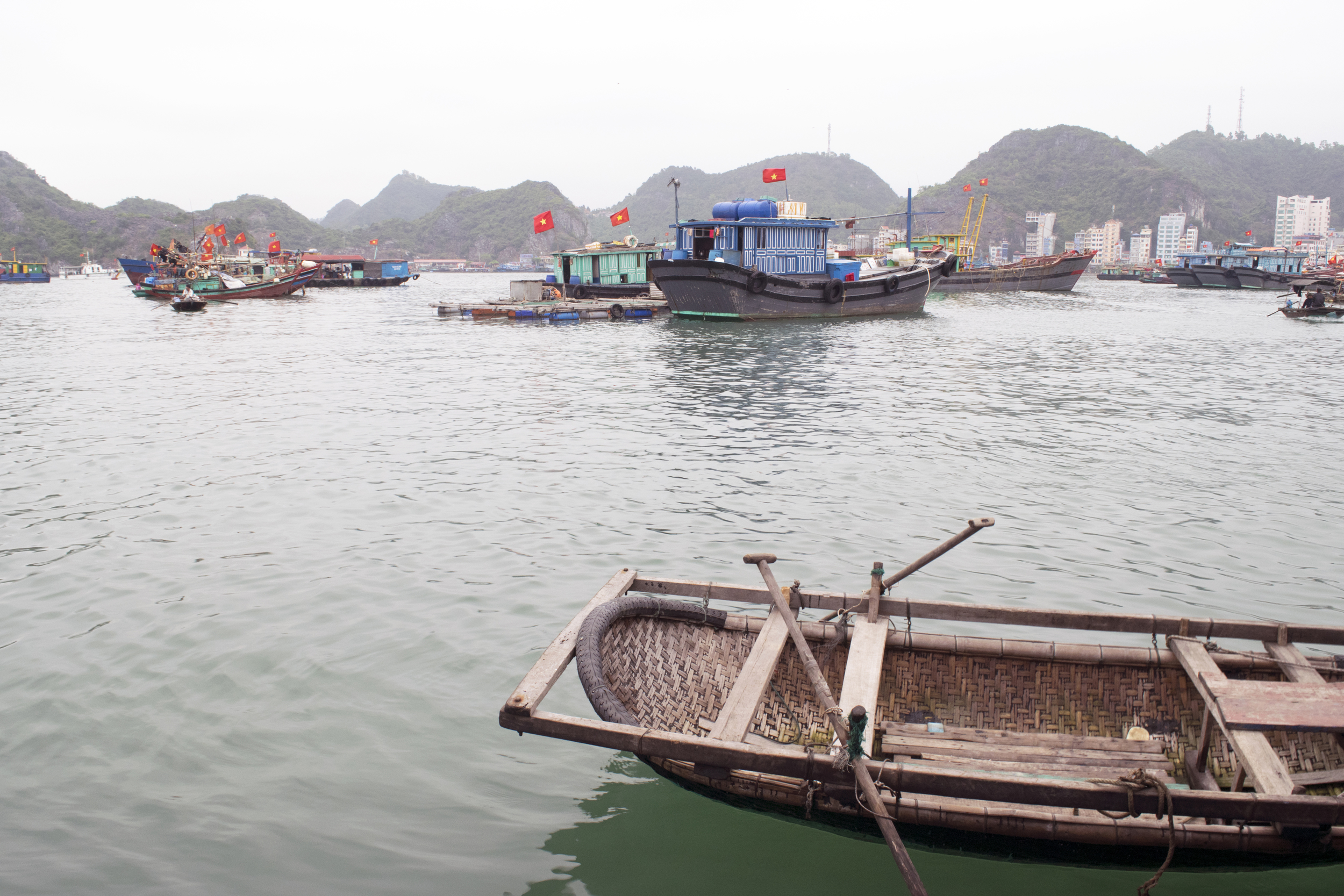
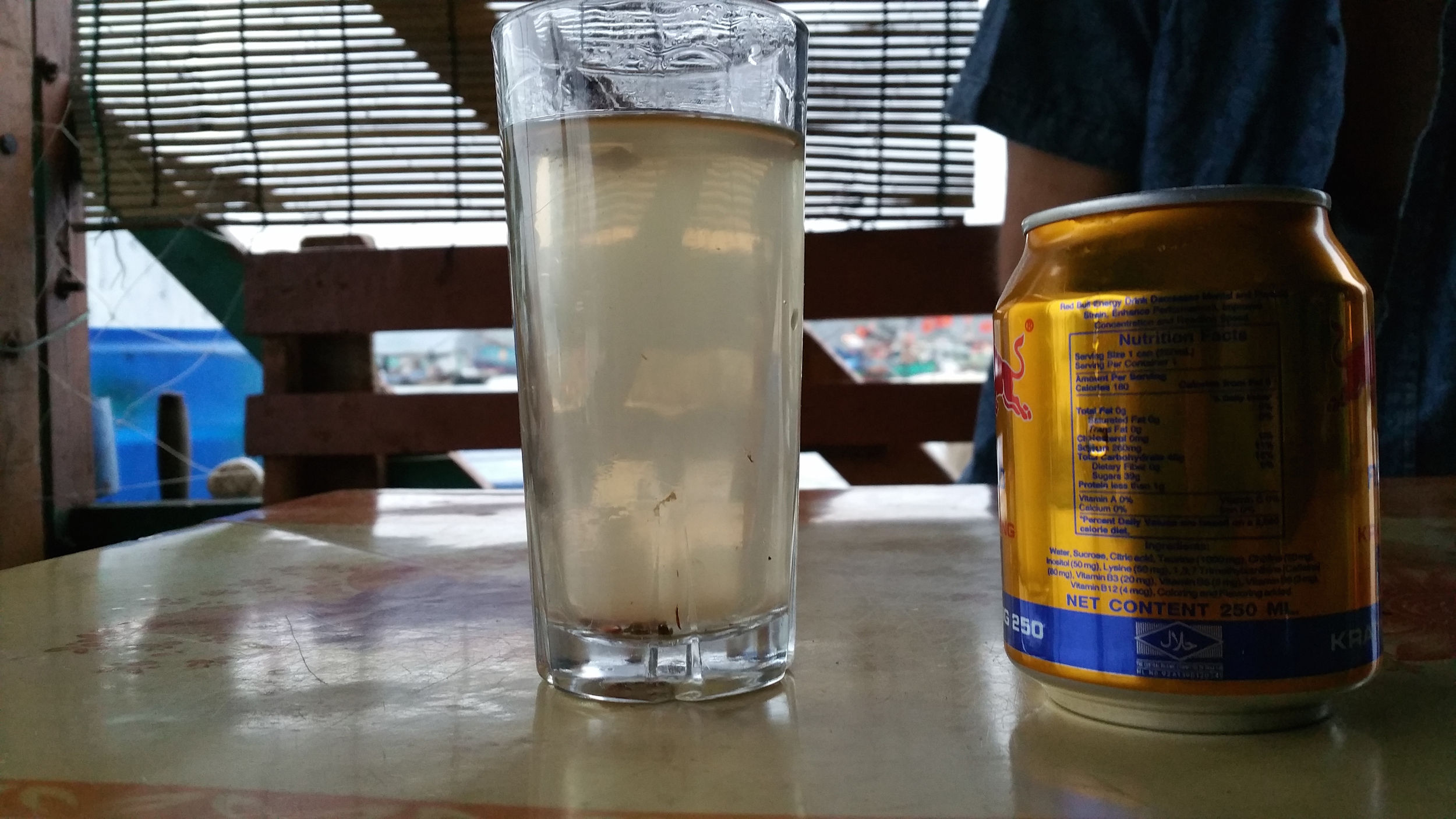
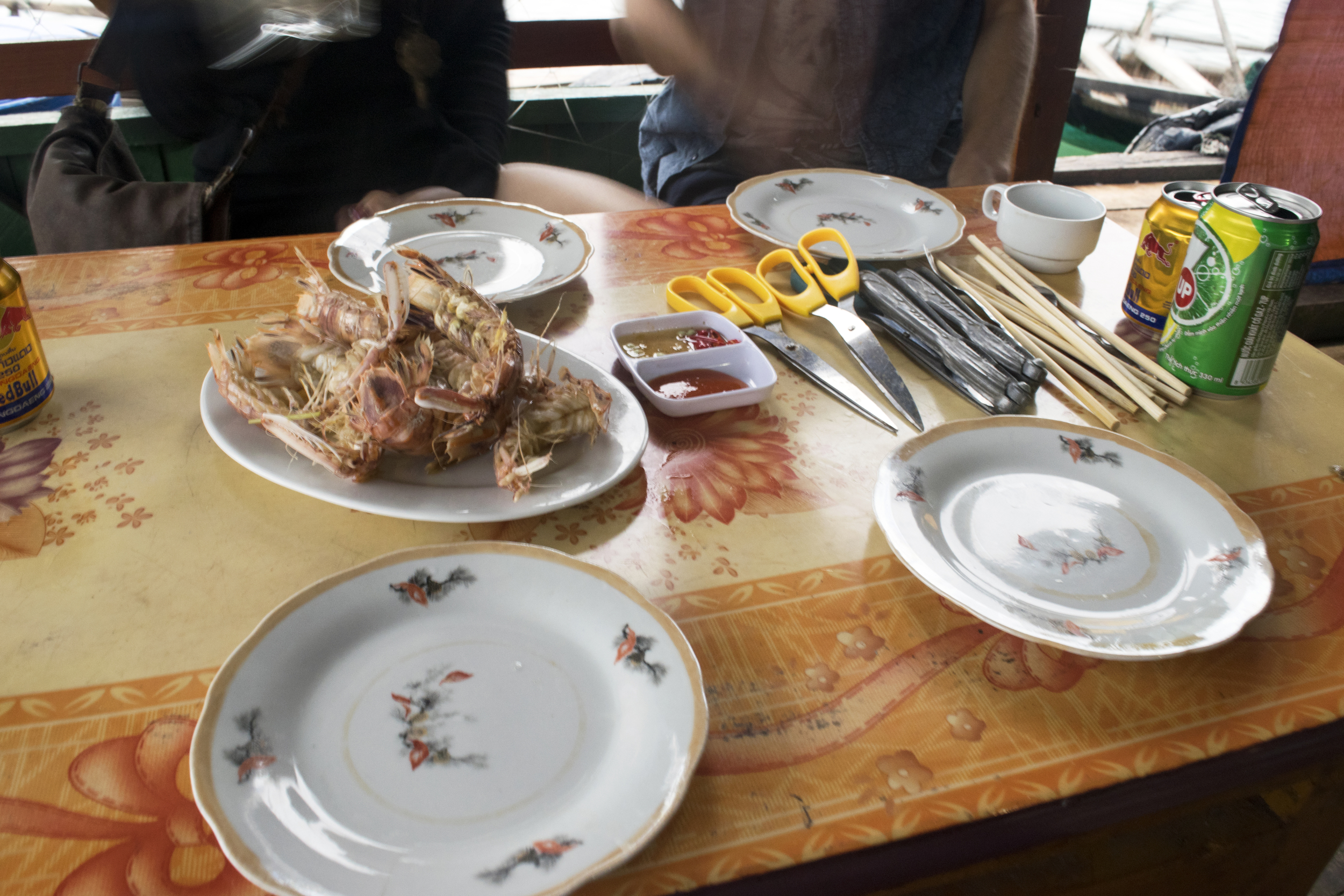
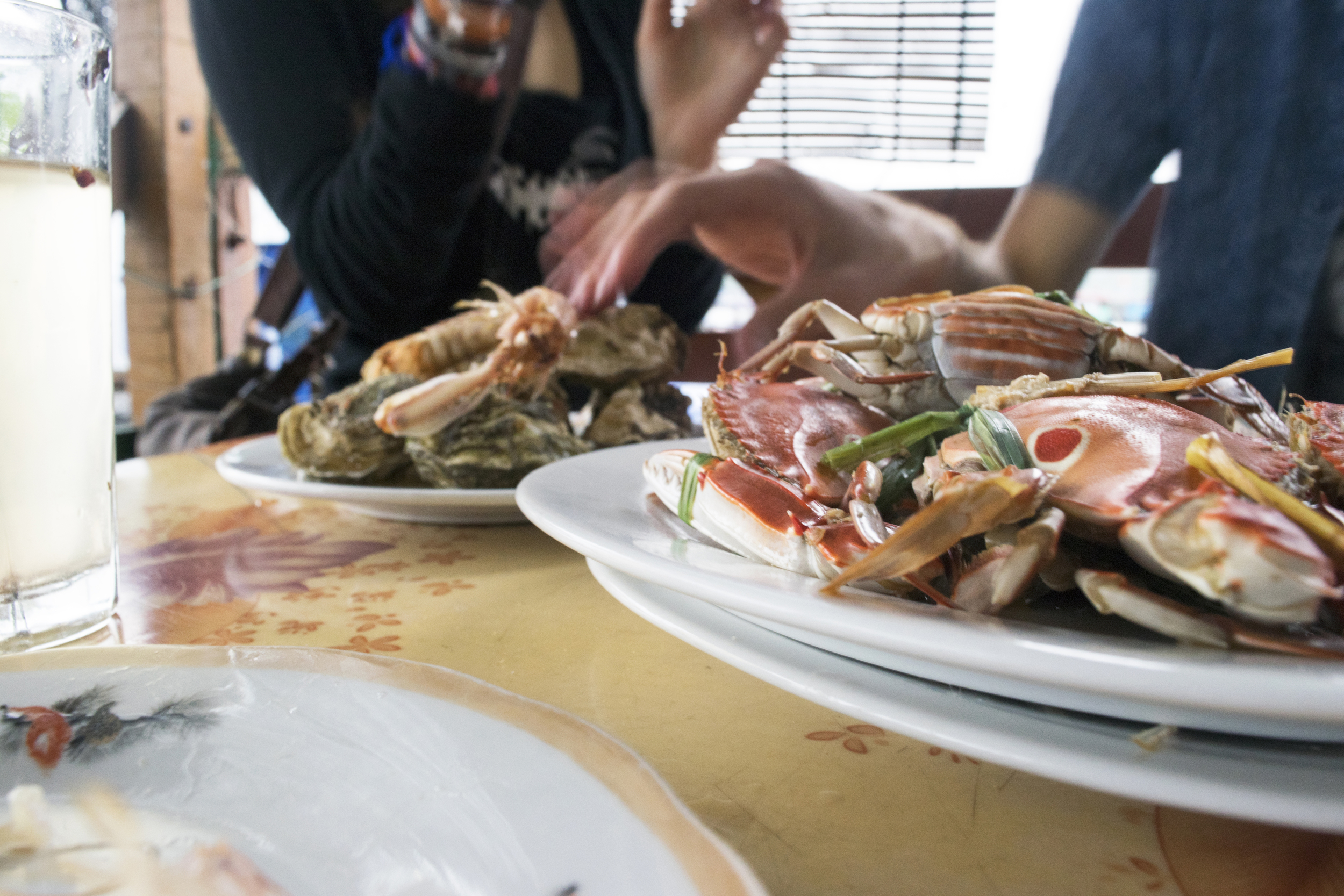
Location: Cat Ba Island, Ha Long Bay, Vietnam
Yesterday, I arrived in the humble, half-moon-shaped port town of Cat Ba Island. It was late afternoon and the waterfront was shrouded in a dense fog. The air stank of seaweed and salt. Everything was tinted a deep emerald green, from the profiles of craggy mountain peaks looming in the distance to the fishing boats bobbing in the harbor to the calm water lapping against the stone steps of the pier. It was much chillier than Hanoi and before dinner I redressed in my warmest gear: a pair of ripped jeans, Converses, a threadbare, knitted hoodie, and an army-style windbreaker. I was still cold and sipped on a hot lemon drink throughout the night, keeping my palms wrapped firmly around the steaming glass.
But I wasn’t too worried about bad weather. I assumed that the dreariness would clear. I’d only seen rain three times so far in Southeast Asia and all encounters had been brief. I also met several people that evening that contested the past few days had been sunny and hot; perfect weather for the sailing and kayaking tours that Cat Ba was so recommended for.
However, when I woke up this morning it was even colder. I kept my blanket tucked around me when I crawled out of bed and when I peered out the hotel window I saw a soft drizzle of rain had begun to dampen the streets. The locals wore fluffy ski jackets, their heads wrapped in wool scarves. I shivered just thinking about the thin fabrics of my own wardrobe.
When I lifted my eyes to the shoreline, however, I forgot my hesitations about leaving the coziness under my covers. The view, one shadowed during the evening by the dimming light and fog, had now partially unclouded and was mesmerizing. A rainy mist still held, but it seemed only to create a shimmering effect over the port, one that offered the softened impression of a painter’s brush strokes. The bowl-shaped harbor, whose steep sides were composed mostly of stone cliffs, surrounded a flat, jewel-toned waterscape spattered with hundreds of mismatched, colorful boats. It reminded me of Jackson Pollock’s bright, messy paint splotches and the pirate ships drawn in children’s storybooks. I had a fleeting thought that I might be looking at artifacts of a lost world. I wanted to experience it.
“Let’s go fishing.”
An hour and a half later, my friends and I made our way down to the pier. We were all bundled in our warmest outfits, and had pooled funds for a cheap bottle of vodka, a few cans of M-150 (a Red Bull-esque energy drink), and a little bit of passion fruit juice. Our plan: ask a captain of one of the smaller vessels if we could charter his boat for a fishing excursion. Nobody was sure it would work or where the next few hours would take us. It was one of those devil-may-care adventures.
As we scoped out the scene, we spotted a landing where a woman in an oval-shaped, woven bottom boat had docked. Her elbows rested on two heavy wooden oars. A teenage girl standing on the shore called out to her. The woman paddled over and the girl climbed in, settling on a wooden plank bench. They then began to slowly make their way through the maze of fishing boats.
When we arrived at the same landing, I saw the stone steps led directly into the water; several bottom rows were wet and coated in a dark, fuzzy layer of algae. One of my friends called out to another woman in a boat-taxi. When she arrived and we asked about fishing, she only pointed to one of the floating restaurants that sat in the water. It quickly became clear that she didn’t speak English. A young man saw our struggle and sauntered over, asked what we were looking for. When we told him, he nodded. He owned a motorized boat and after a bit of haggling (one of my friends kept repeating that he’d rather rent one of the paddle boats and row out there himself than pay $10 per person) we found ourselves in a little white-and-teal painted wooden craft on our way to sea.
Once we were in the water and level with all the boats, I saw they were even more incredible than I’d first thought. There were dinghies, schooners, and steamboats of all sizes and made from all sorts of strange materials. There were foundations assembled from bamboo bottoms tied together with rope, foam blocks stacked on top of each other, tires, and mismatched planks of wood. The engineering looked so random I was reminded of my Lego days, when I refused to abide by the instructions in the box and, to the horror of my little brother, would construct impractical, rainbow vehicles that had dual uses, like space travel and transport of small-to-medium sized dinosaurs. And, like my creations, everything on these real-life boats was vibrant. All were decorated with large light bulbs, full clotheslines, at least a handful of red Vietnamese flags.
We motored out between the rocky cliffs of islands, some studded with green foliage and others bare, steep, and rough. Our captain found a suitable spot by the edge of one particularly cragged island and revealed several simple spools, some wood and some plastic. Each one held a twist of clear fishing line. He knotted tiny metal hooks on the ends, then pulled the shells off a small pile of slimy prawns. We cut into the soft gray flesh with the rusty hooks and dropped our lines over the edge of the little boat and into the dark, murky water.
We fished for several hours, catching mostly colorful reef fish that we tossed back because they were too small to eat. Every once in a while, a large, orange-spotted jellyfish as wide as a stop sign would float up to the surface. The captain demonstrated that they weren’t poisonous and that we could pet them by tugging one up out of the water by its bumpy top. He motioned that they were edible, but nobody was hungry enough to test it out.
Instead of taking us directly back to shore, the captain brought us to one of the floating houses in the water. It had three sections: the dock, a planked grid with openings where nets holding an assortment of sea creatures hung in the water; a wide, covered porch area with multiple tables and benches; and a wood house with walls painted mint green and an outhouse that was nothing more than a porcelain hole over the water. This all bobbed in the bay. The edges of the wooden dock had been covered in rubber tires to prevent boats from scraping against it.
We were greeted by two large dogs when we landed; one was a black and white spotted mutt with wiry hair and long legs that watched patiently as we tied down the boat and sniffed us when we stepped aboard, the other a sleepy brown pup that preferred to lounging in the sun to our company. An elderly man wearing linen and smoking tobacco from a tall, thin bong also ignored us. But a woman in a pink sweater greeted us and asked if we were interested in any of the fresh catch. We realized that this was the captain’s parents’ home and restaurant.
We chose a selection of yabbies (half-crawfish, half-lobster creatures), crab, and oysters from the nets to boil while the captain disappeared into the house. The woman in pink collected the seafood and brought it to a large, ash-stained pot sitting over a fire in the kitchen. While we waited, the elderly man saw we were drinking and offered us moonshine from his teacup. We all took a nauseating, stomach-churning, throat-burning gulp and a moment later he came back with a full glass of the stuff.
It wasn’t the first time that I’d tried Vietnamese moonshine, which was so cheap it couldn’t be avoided. But this was the first time I’d seen it in it’s full glory in daylight through a clear glass. For the first time I was really seeing what I’d been drinking: the liquid was translucent with a gray-brown tint and there were crumpled leaves, and hair-like pieces of god-knows-what floating in it, and gritty residue resting at the bottom. We took turns swigging from the glass, drowning it in M-150. And when we ran out of chaser, we continued, shaking our heads in disgust after each turn.
When the food was ready, the captain brought out chopsticks, claw crackers, and extra plates. The stacks of shellfish arrived almost too-hot-touch, shells pink from boiling. And everything was tender, fleshy, and held that innate saltiness exclusive to fresh-caught seafood. The most delectable part was definitely the oysters, which were the fattest, most meaty, least slimy ones I’d ever tasted. But it was all out-of-this-world.
After we ate, the fisherman dropped us back off at the shore more-than-satisfied, belly-aching-full, and exhausted.
Expenses:
Chartered fishing vessel, equipment, and bait: $5 per person
Surprise seafood restaurant dining experience: $5 per person
Tall glass of moonshine: $2
Travel Tips:
Unplanned adventures are the best if you are looking for a different-than-the-usual-tourist experience. I wouldn’t have met the fisherman or his family if I’d just taken a tour. Never be afraid to branch out on your own if you want to do a specific activity, and keep an open mind!
- If you are in a coastal place, eat all the seafood you can. It’s incredible.
